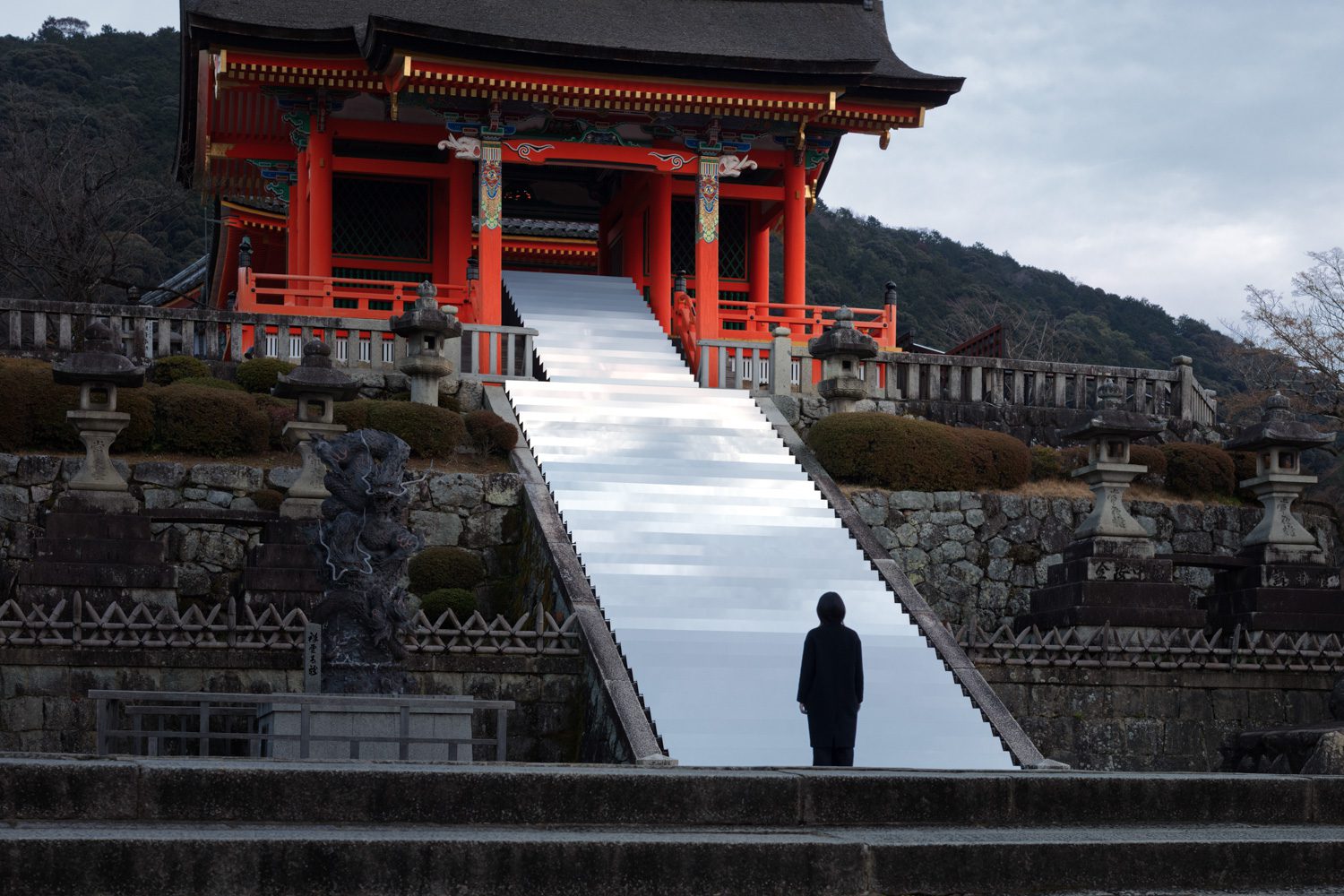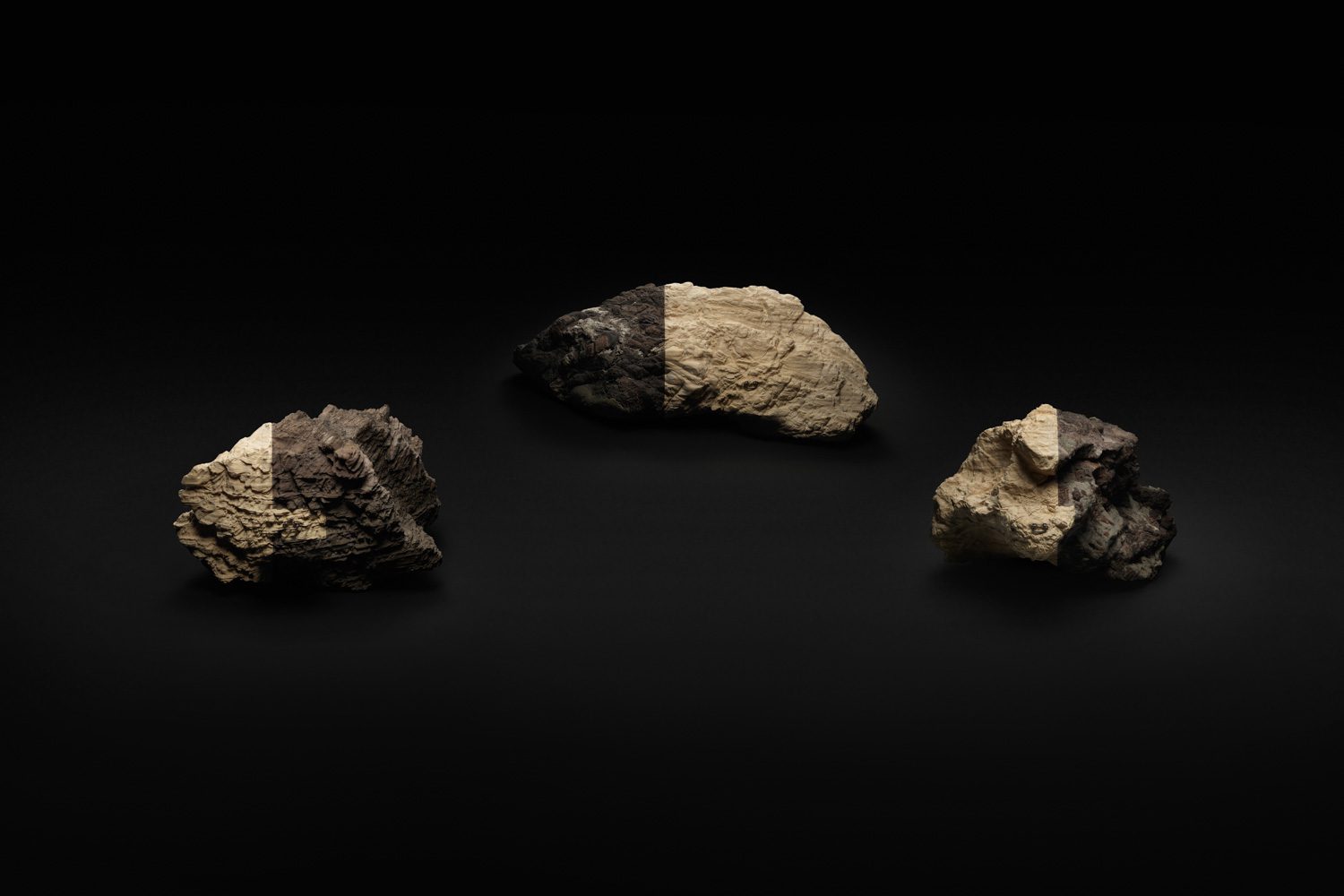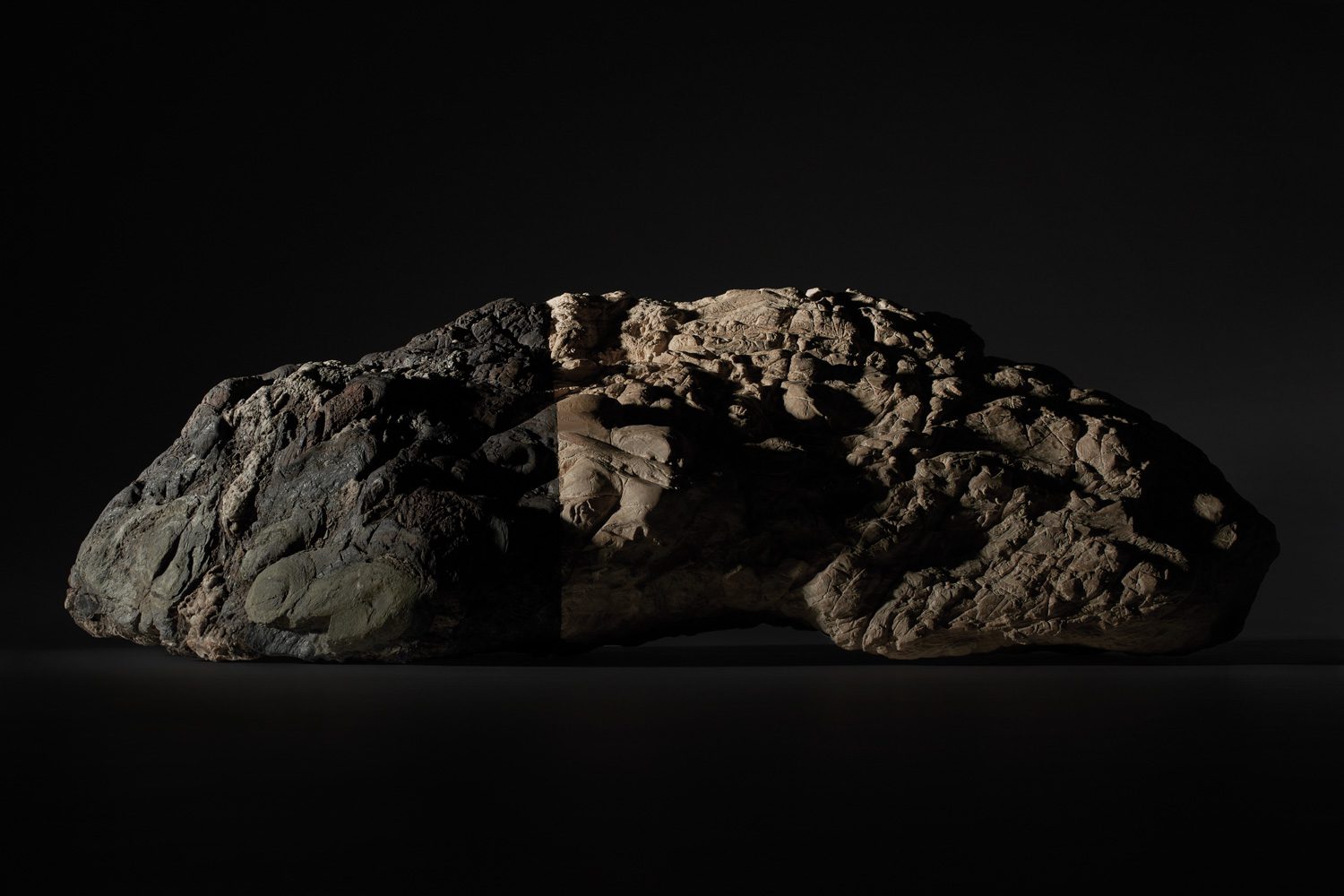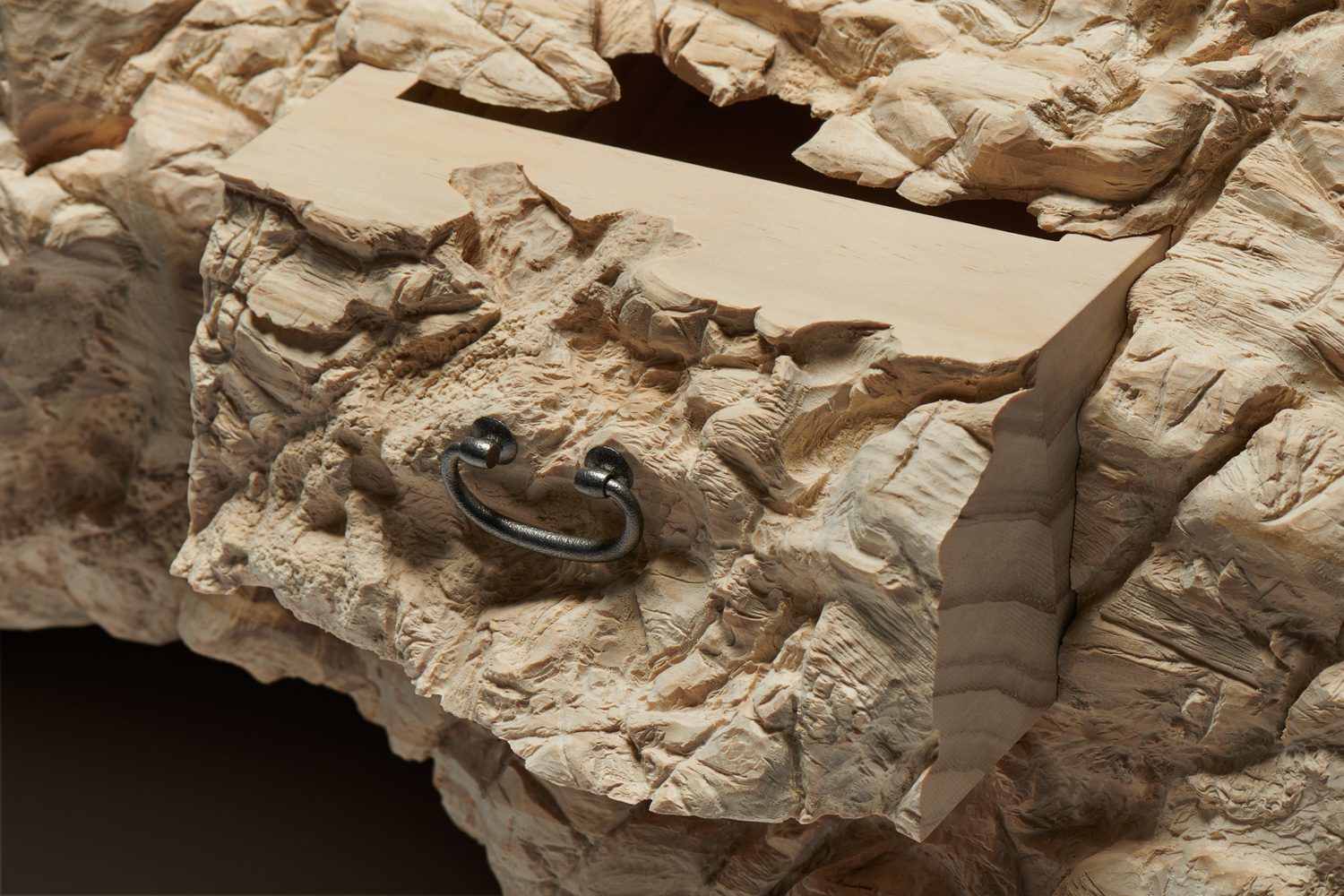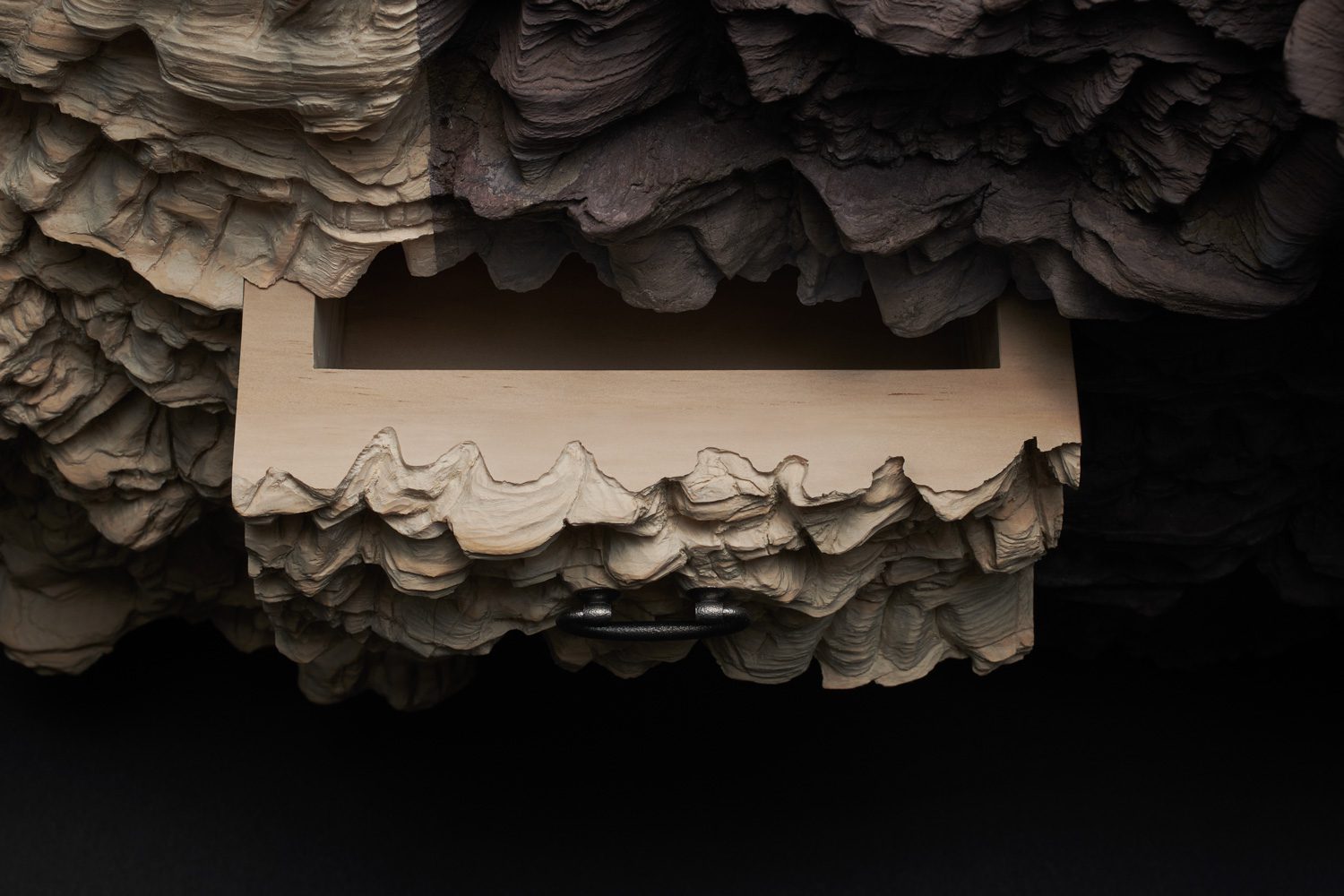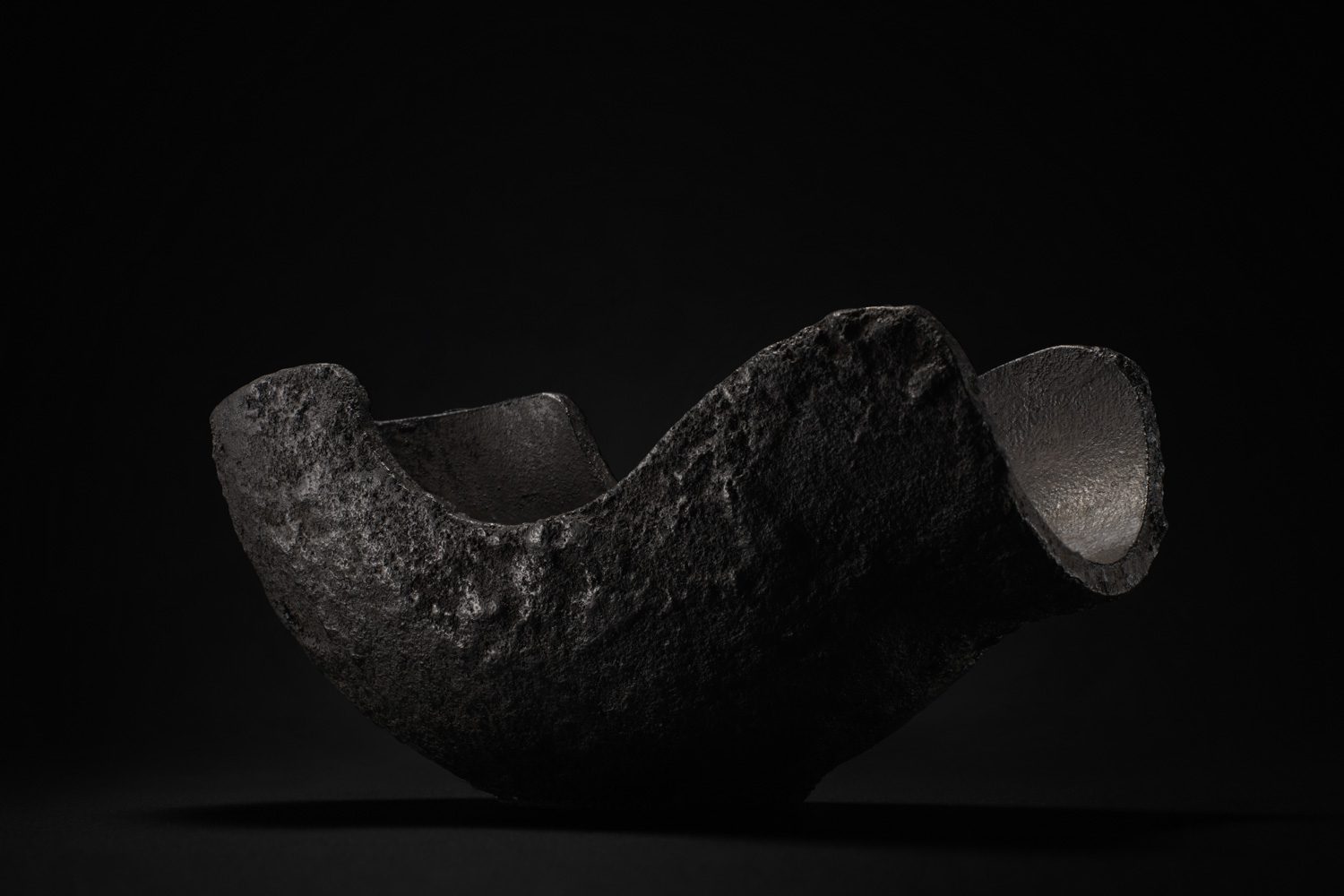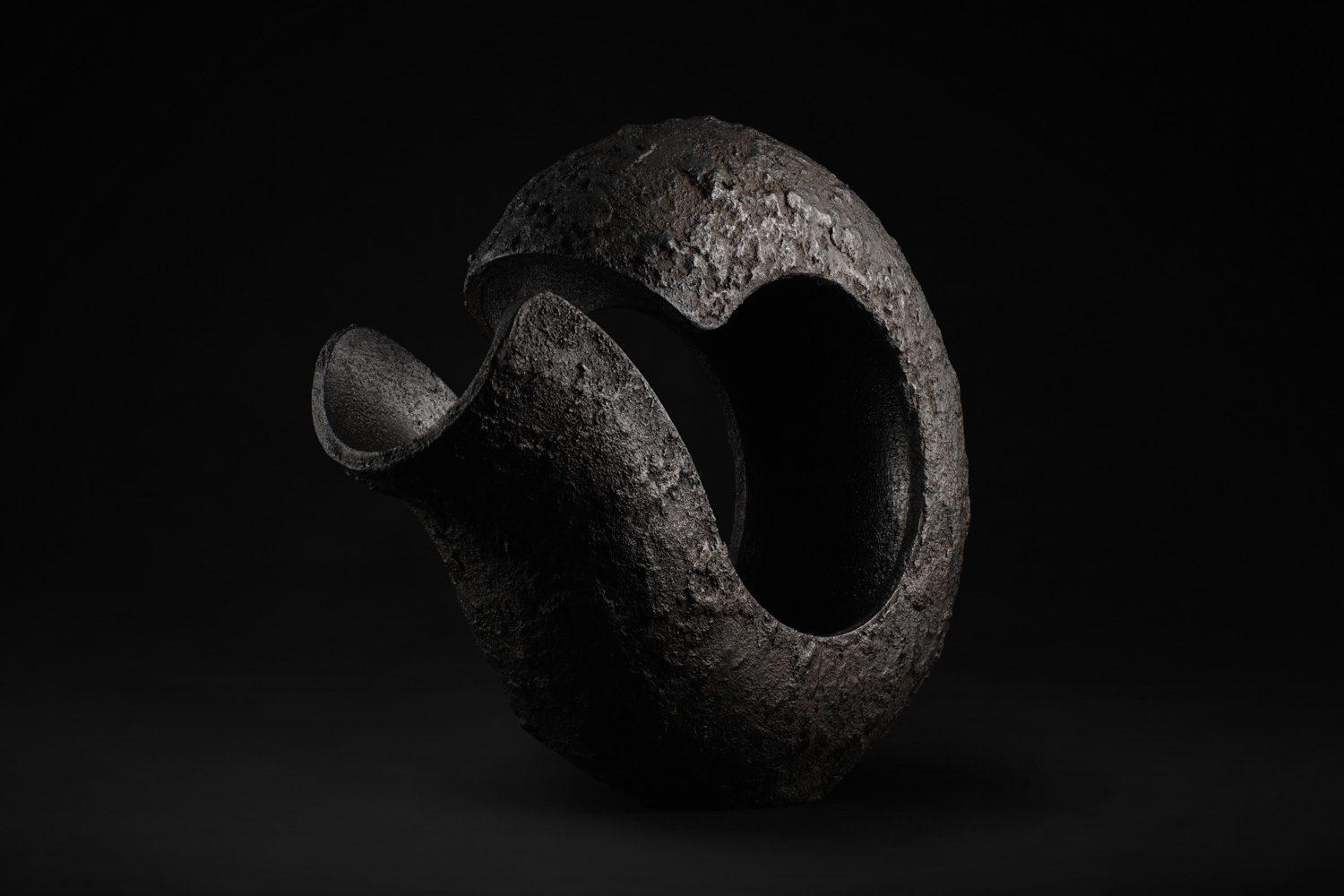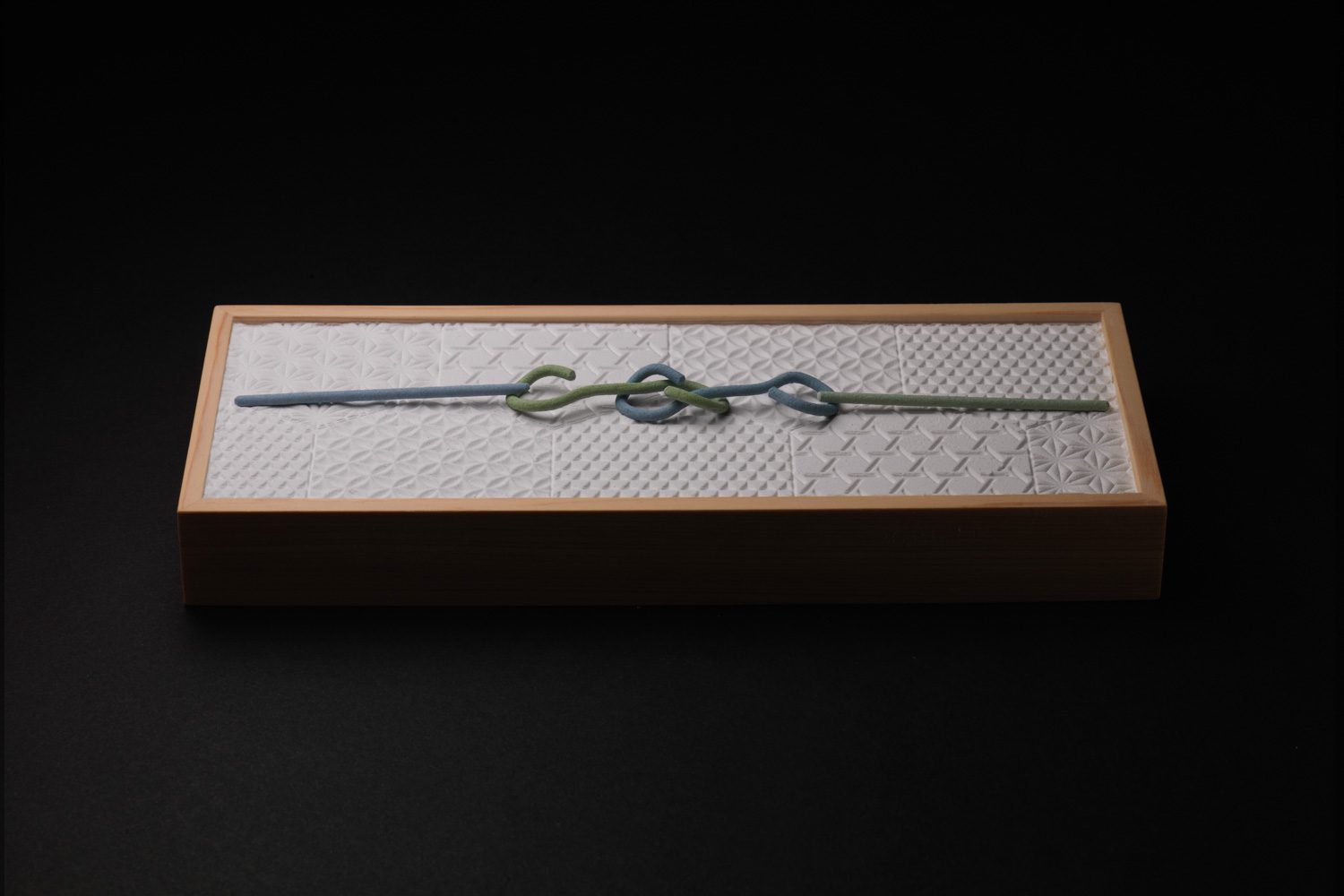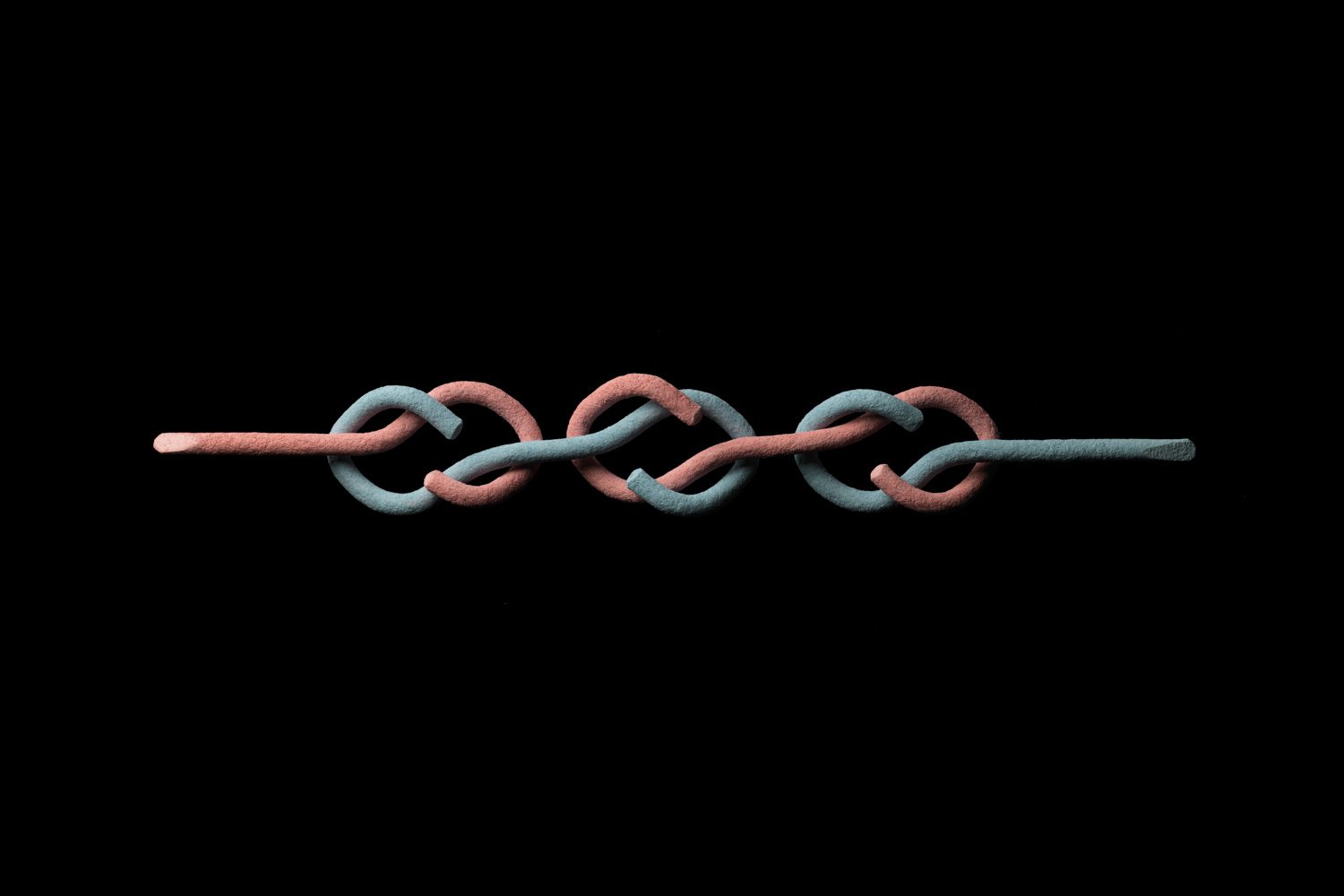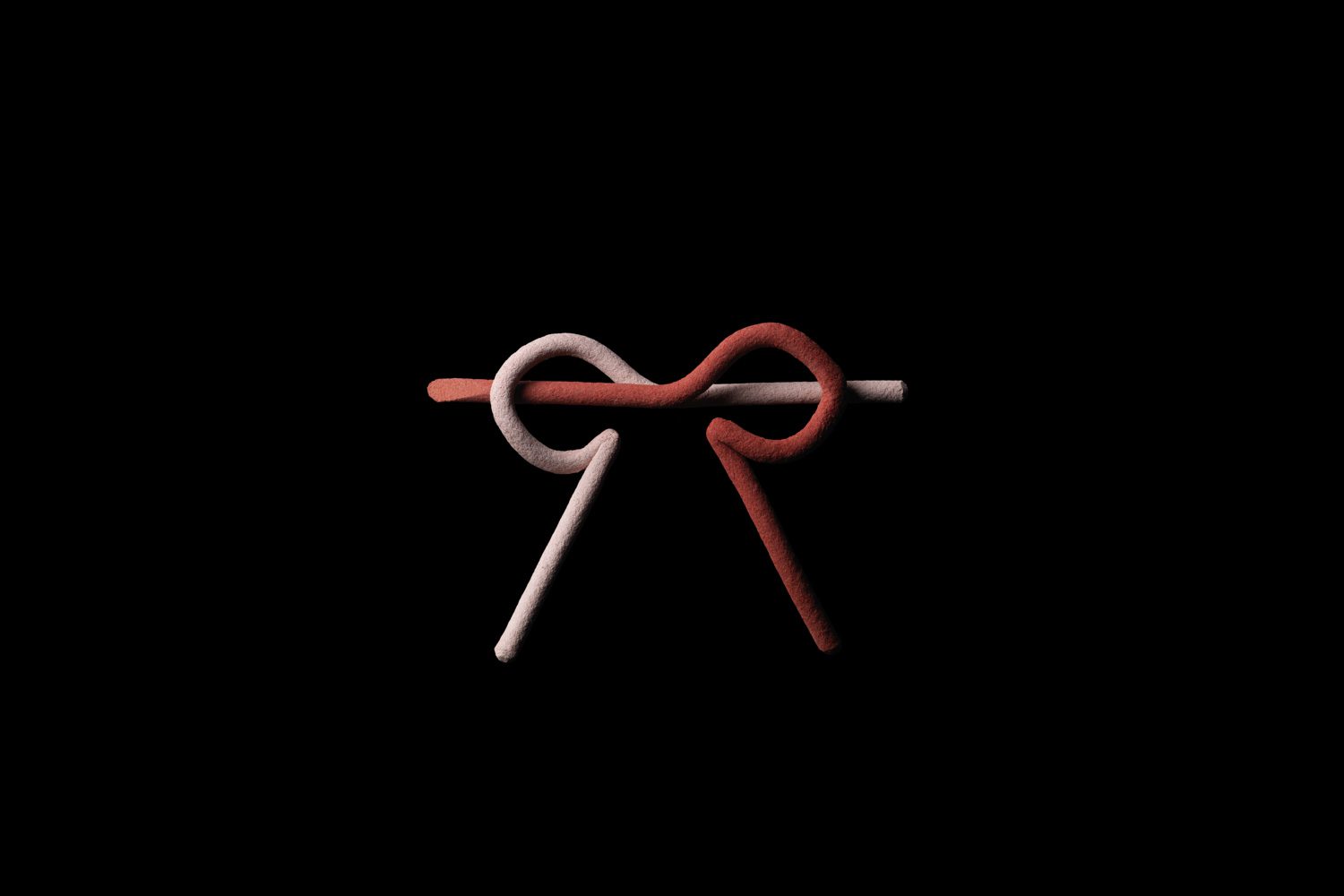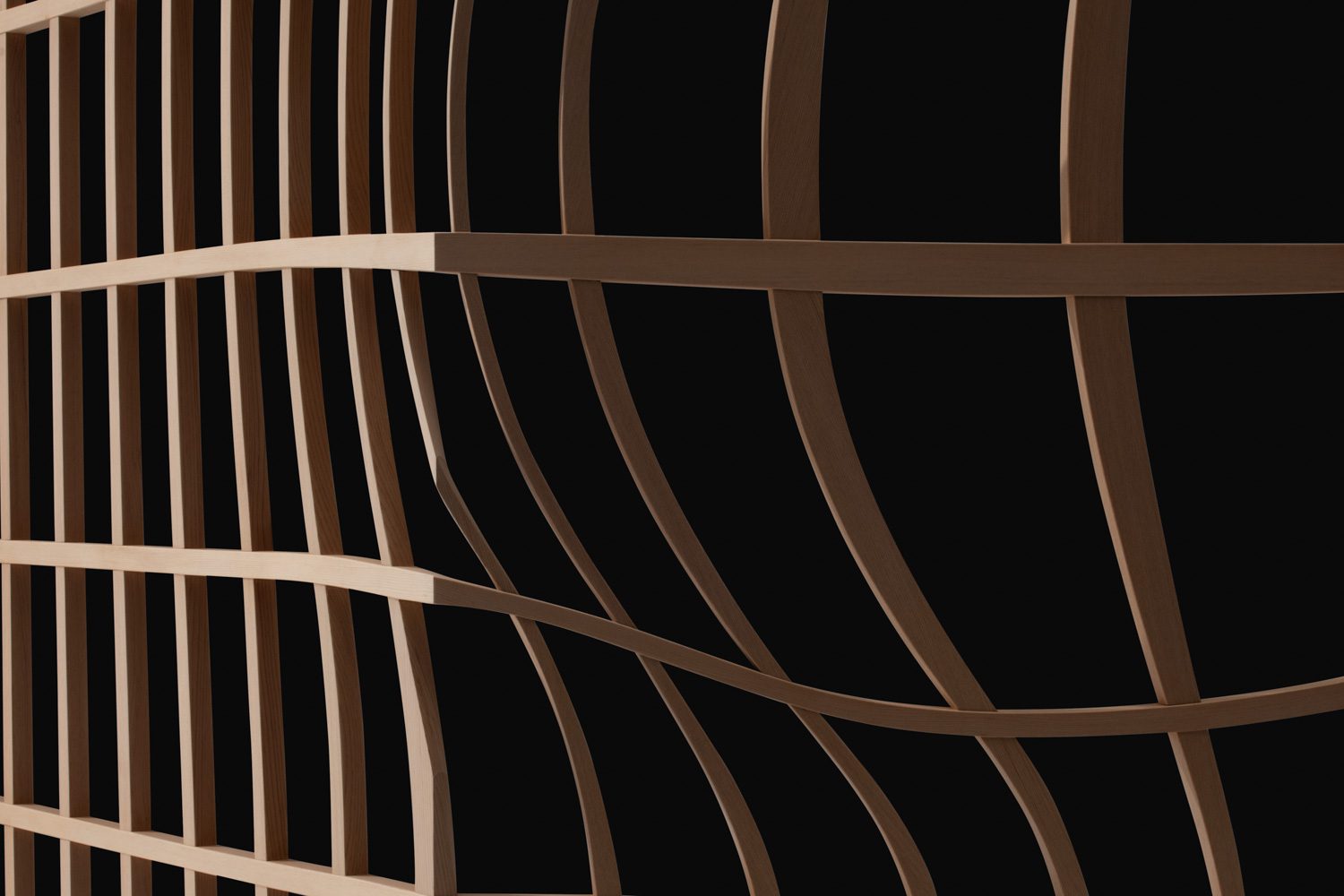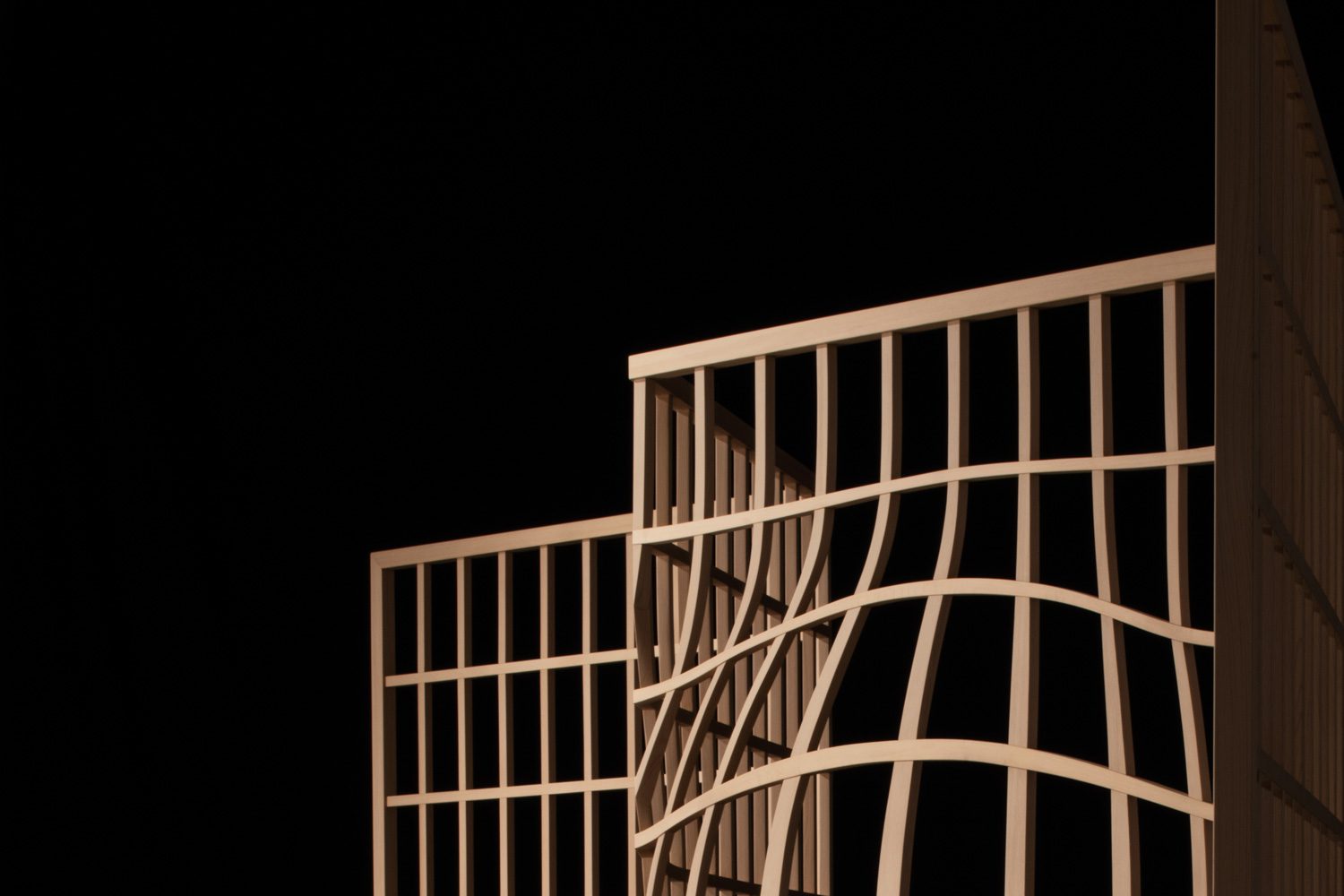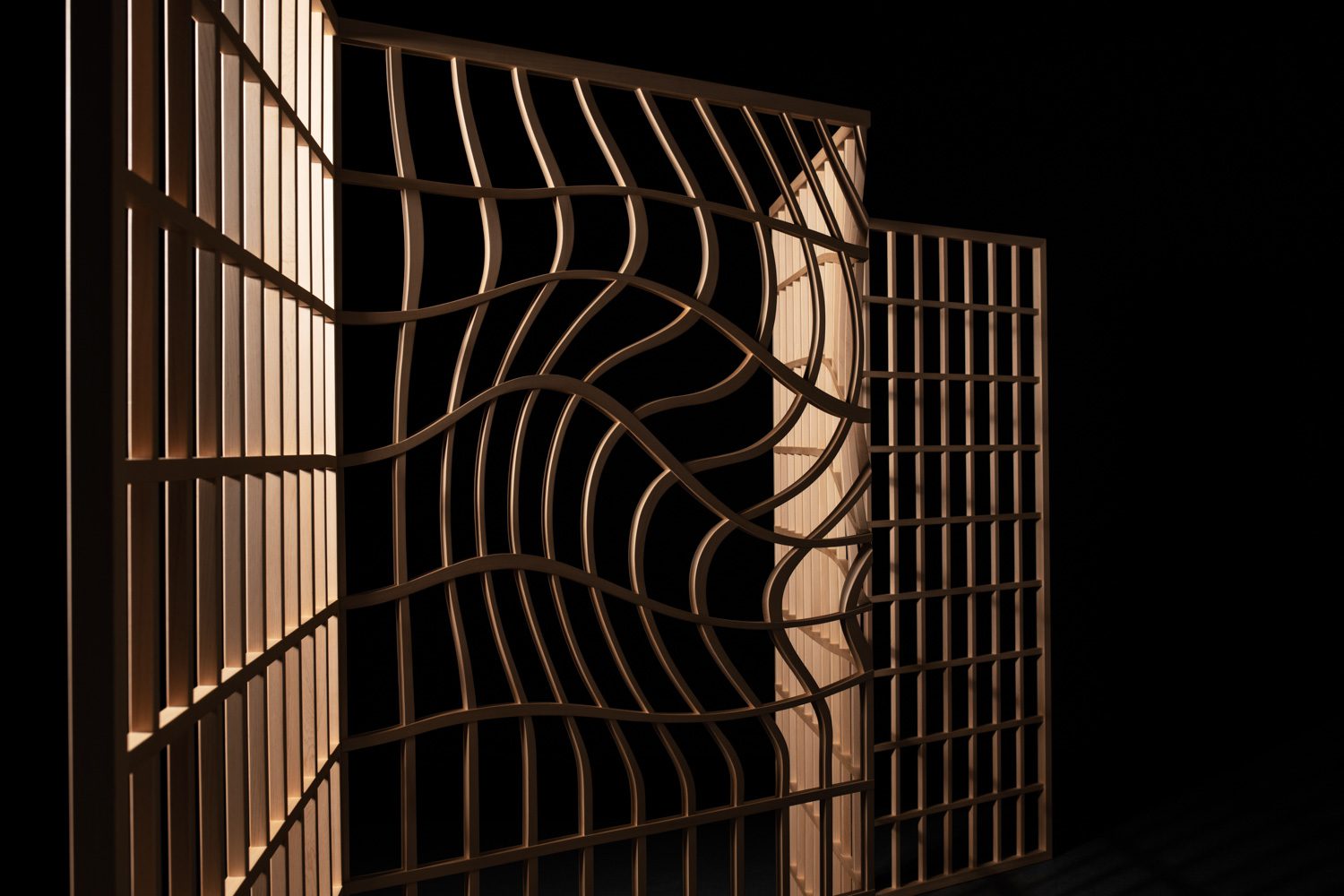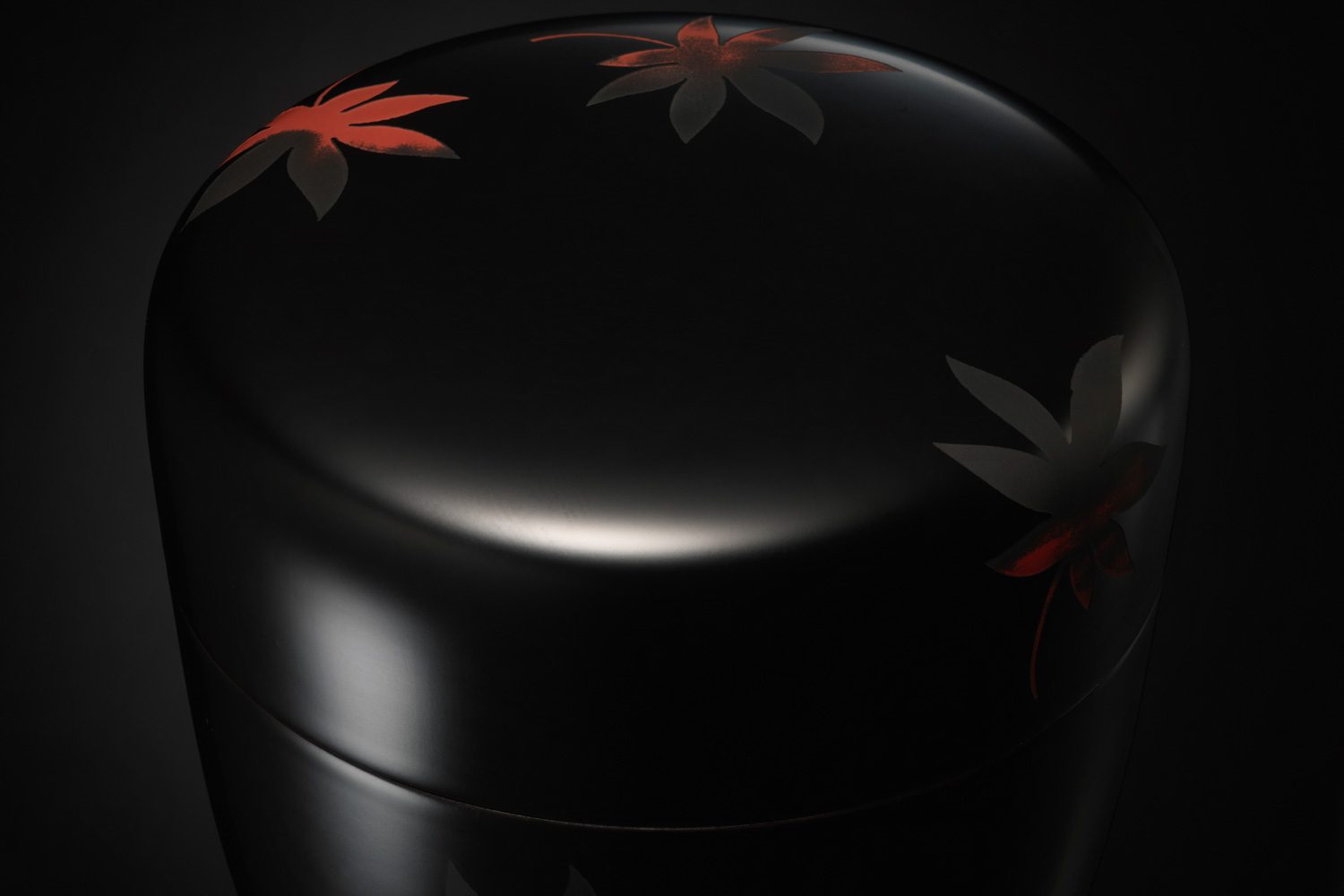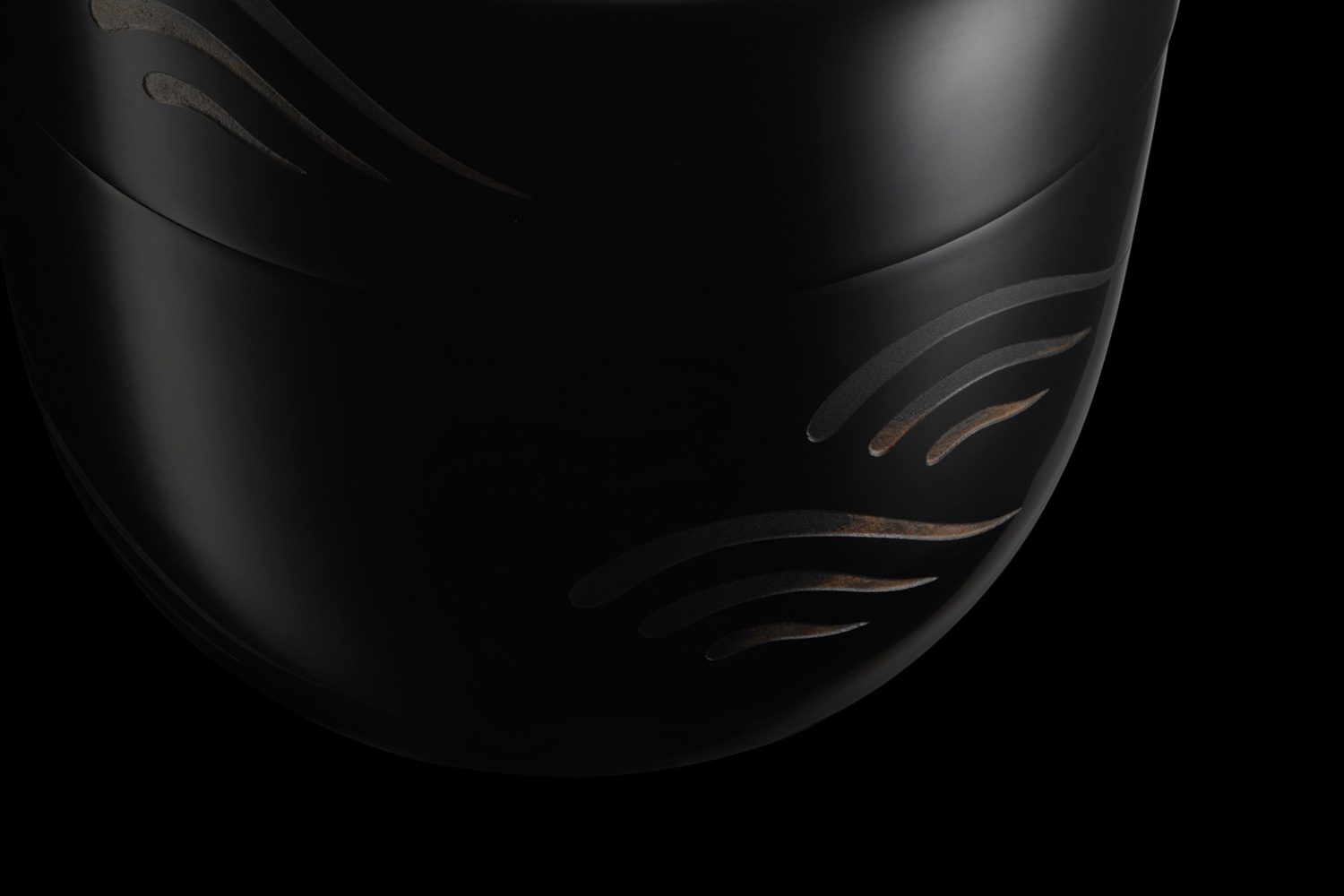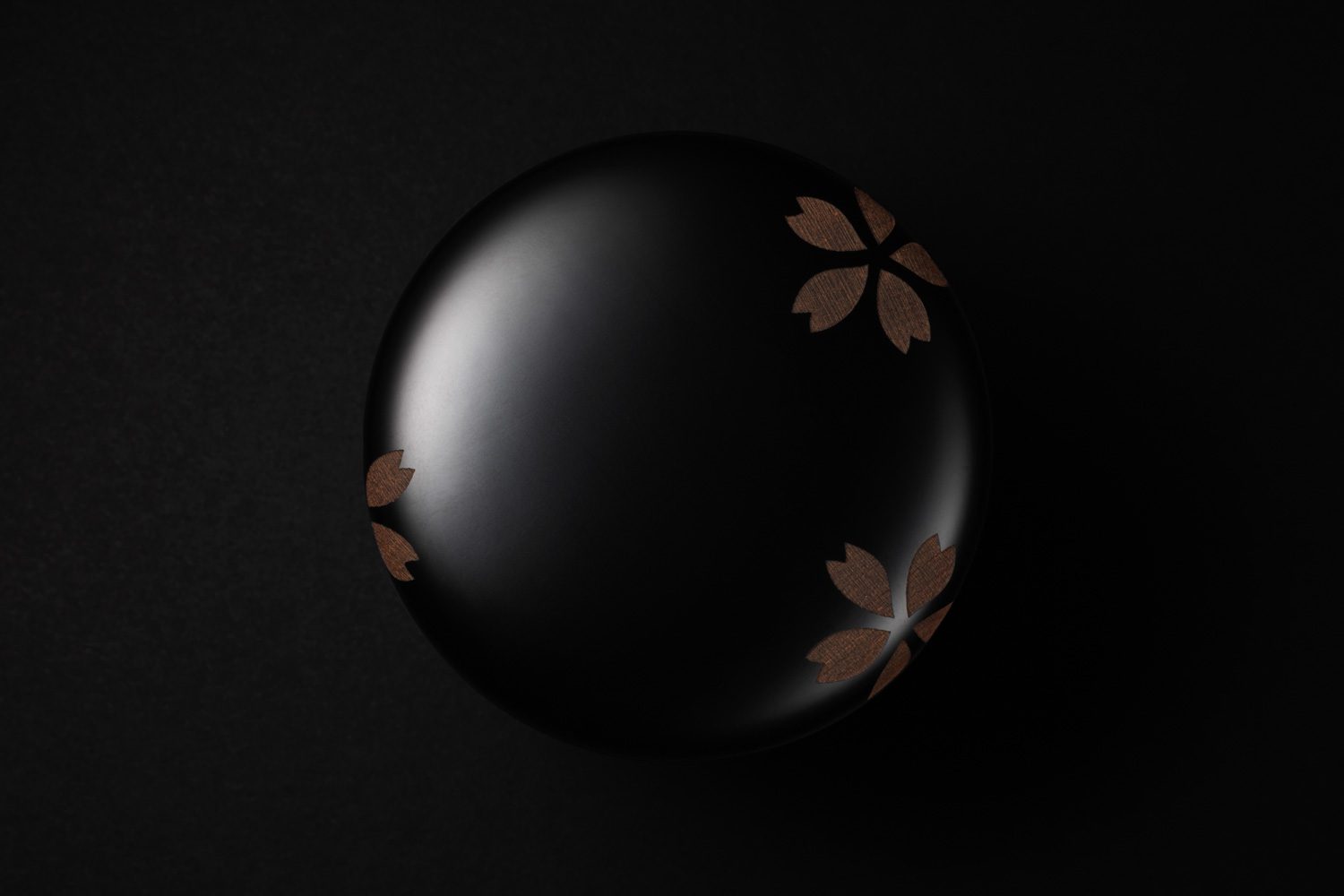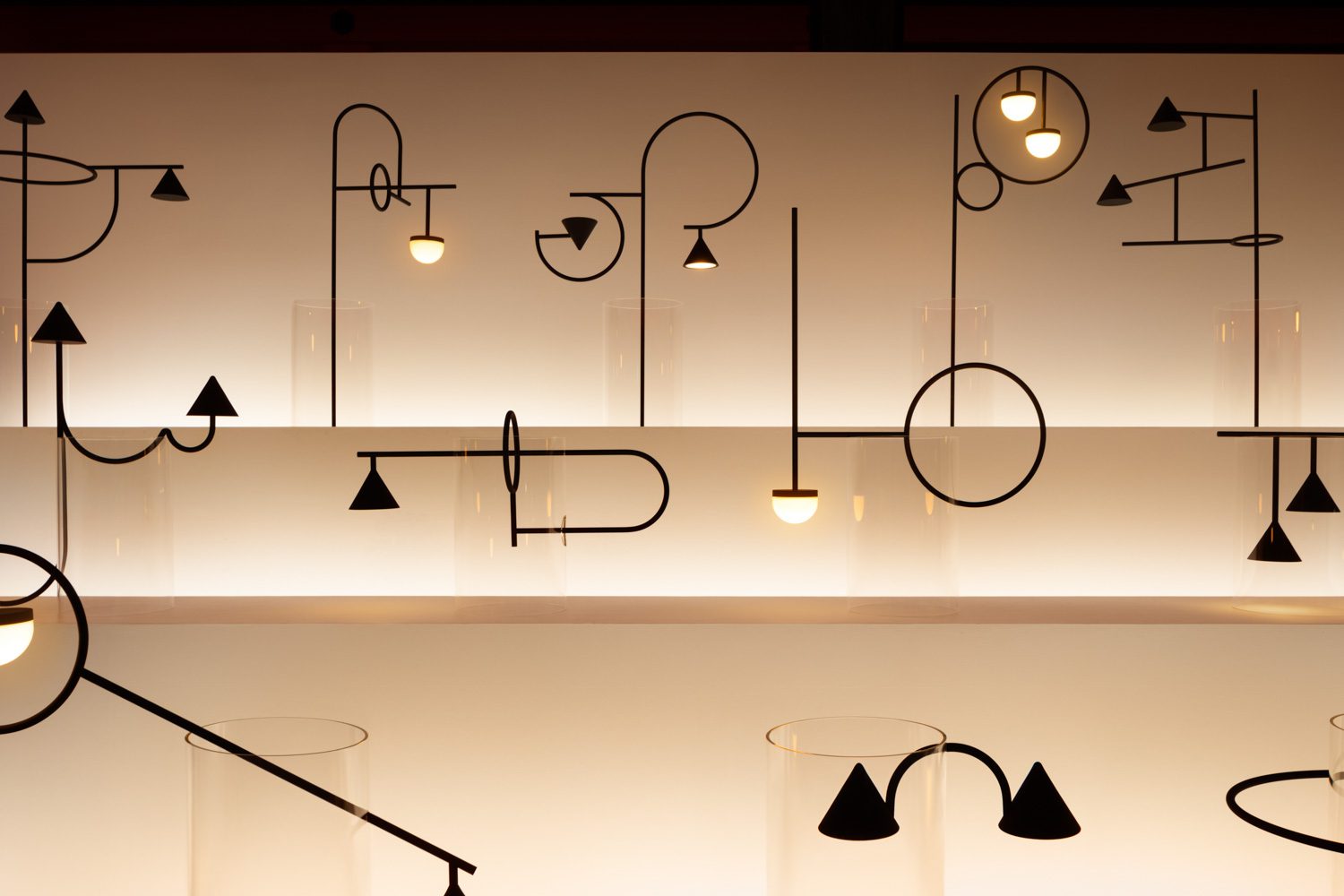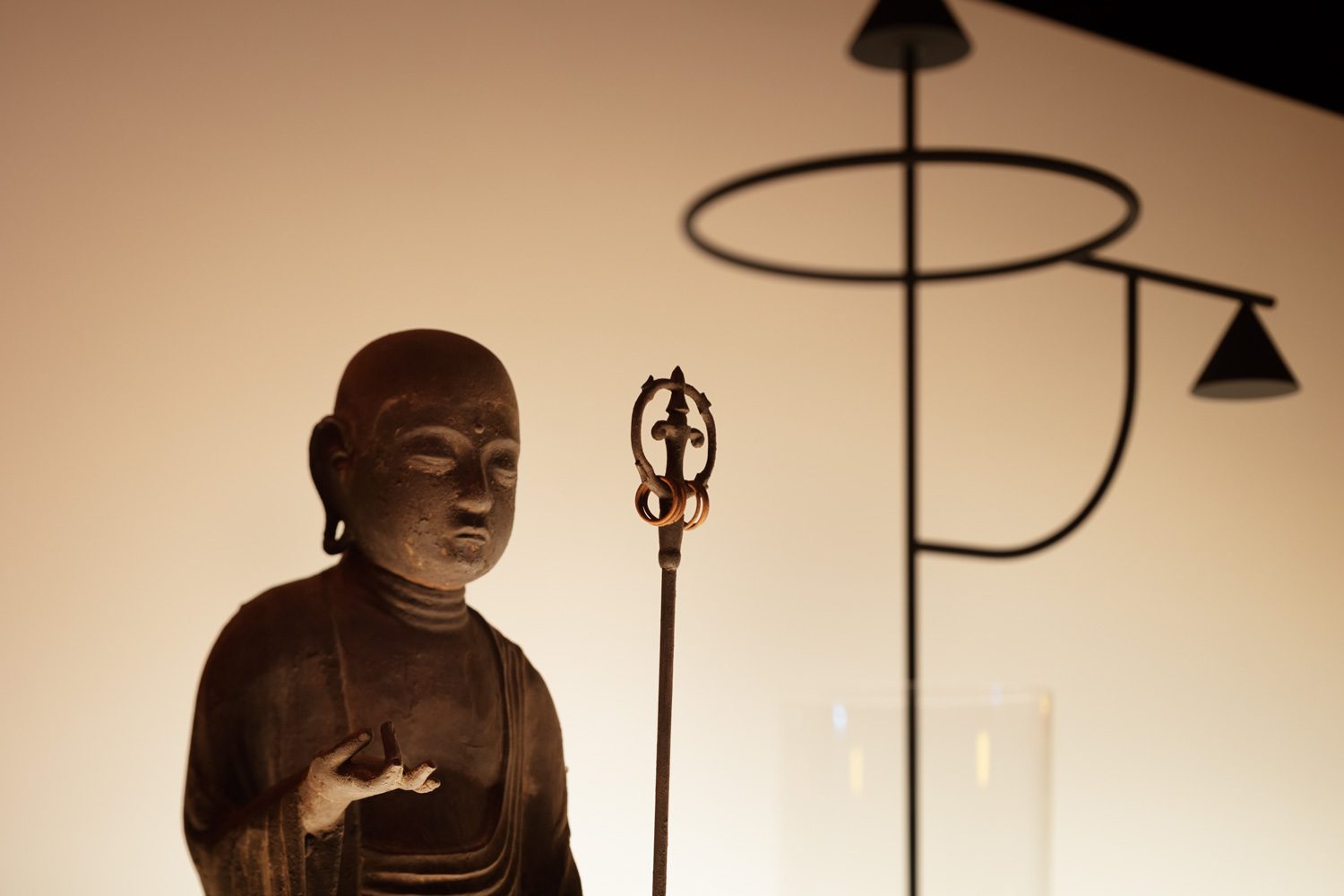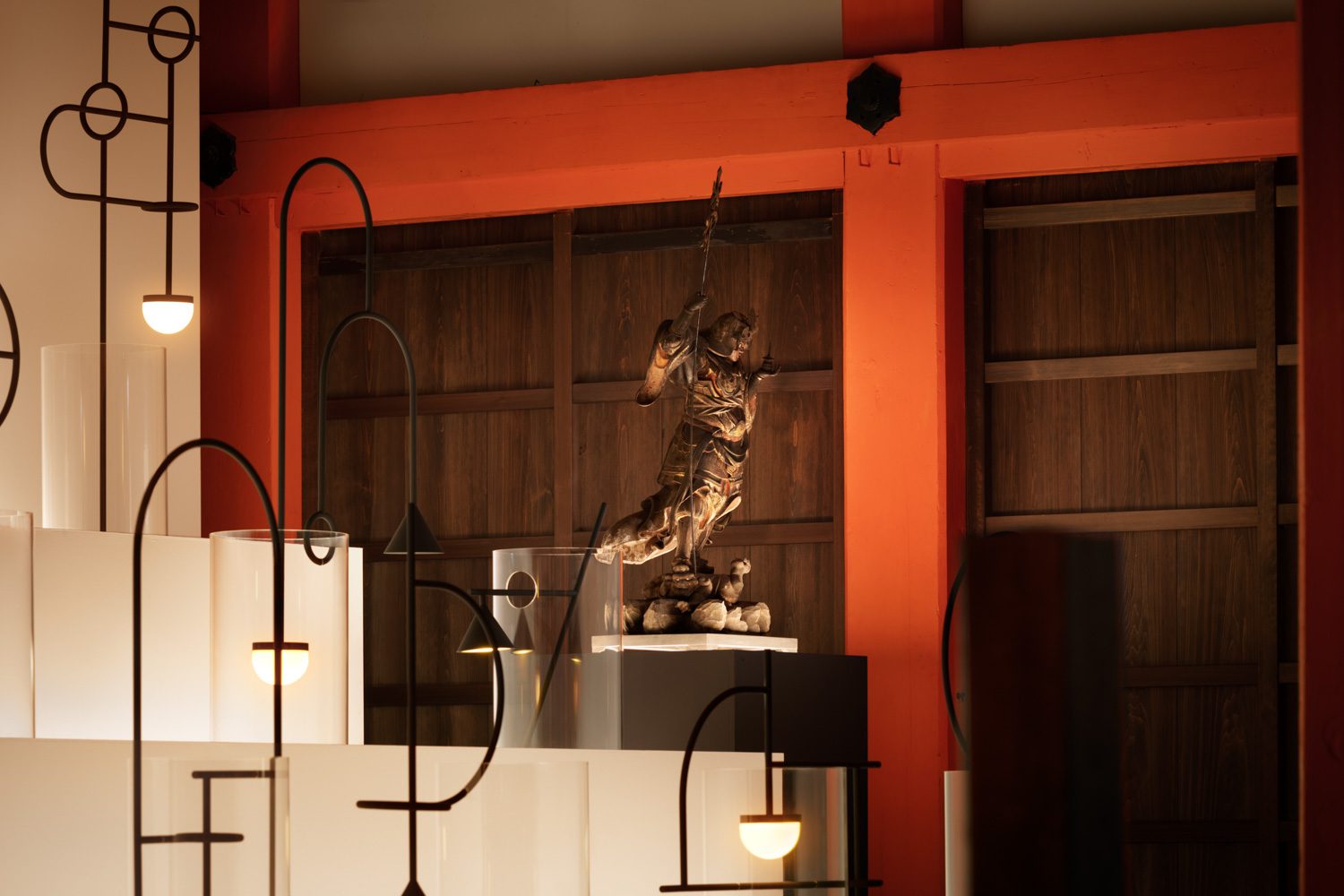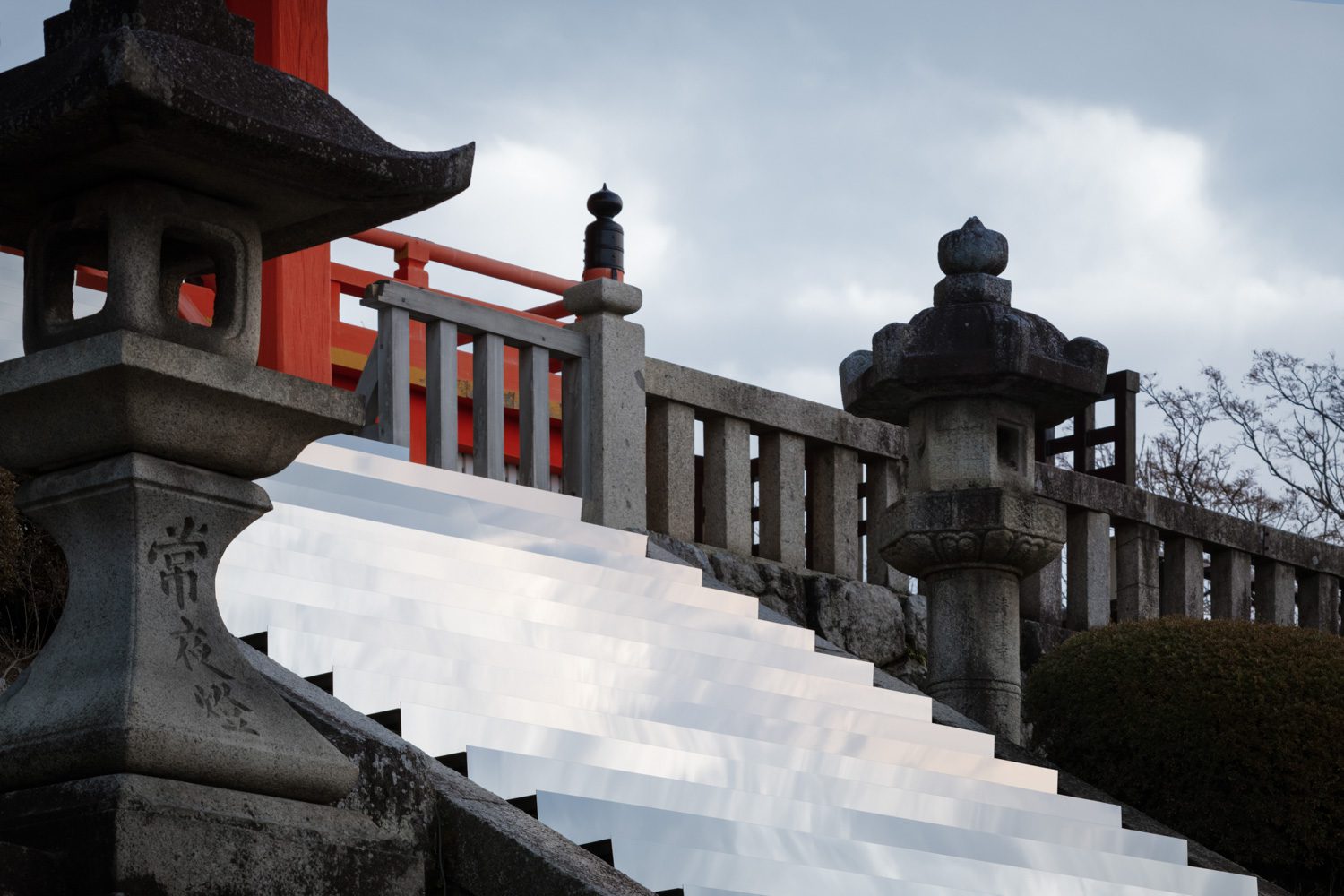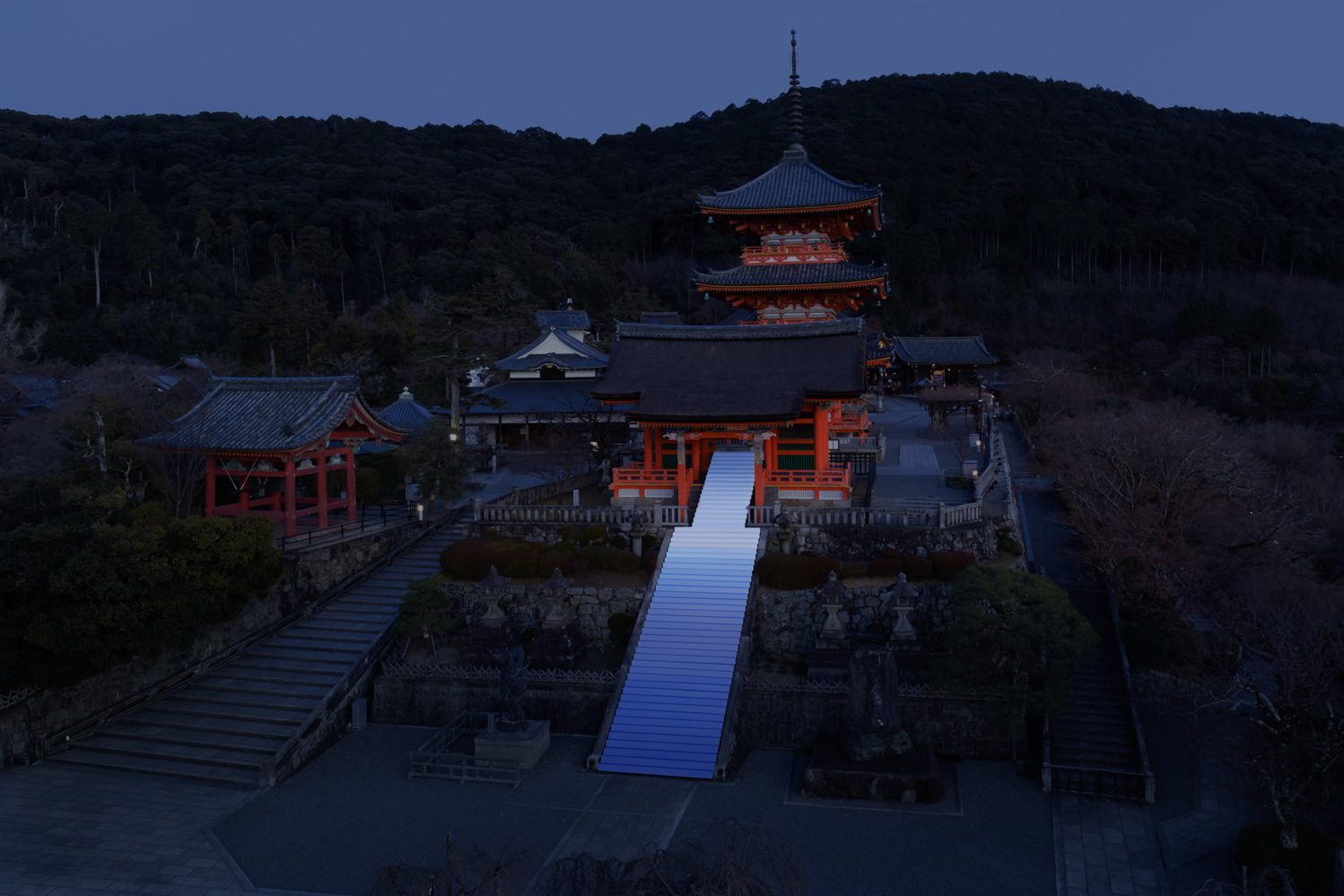TEXT: NATHATAI TANGCHADAKORN
PHOTO COURTESY OF NENDO except as noted
(For Thai, press here)
Sato Oki, designer, architect and founder of Japanese design studio, nendo, is masterful when it comes to transforming different ‘methods’ of ordinary practices and everyday objects into something extraordinary; from a making process to how one uses, sees and contemplates things. He puts together NENDO SEES KYOTO, the exhibition where he works together with 7 artisans and studios with expertise in traditional Kyoto crafts. Parts of the exhibition will take place at Ninomaru-goten, the palace situated inside Nijo-jo Castle.
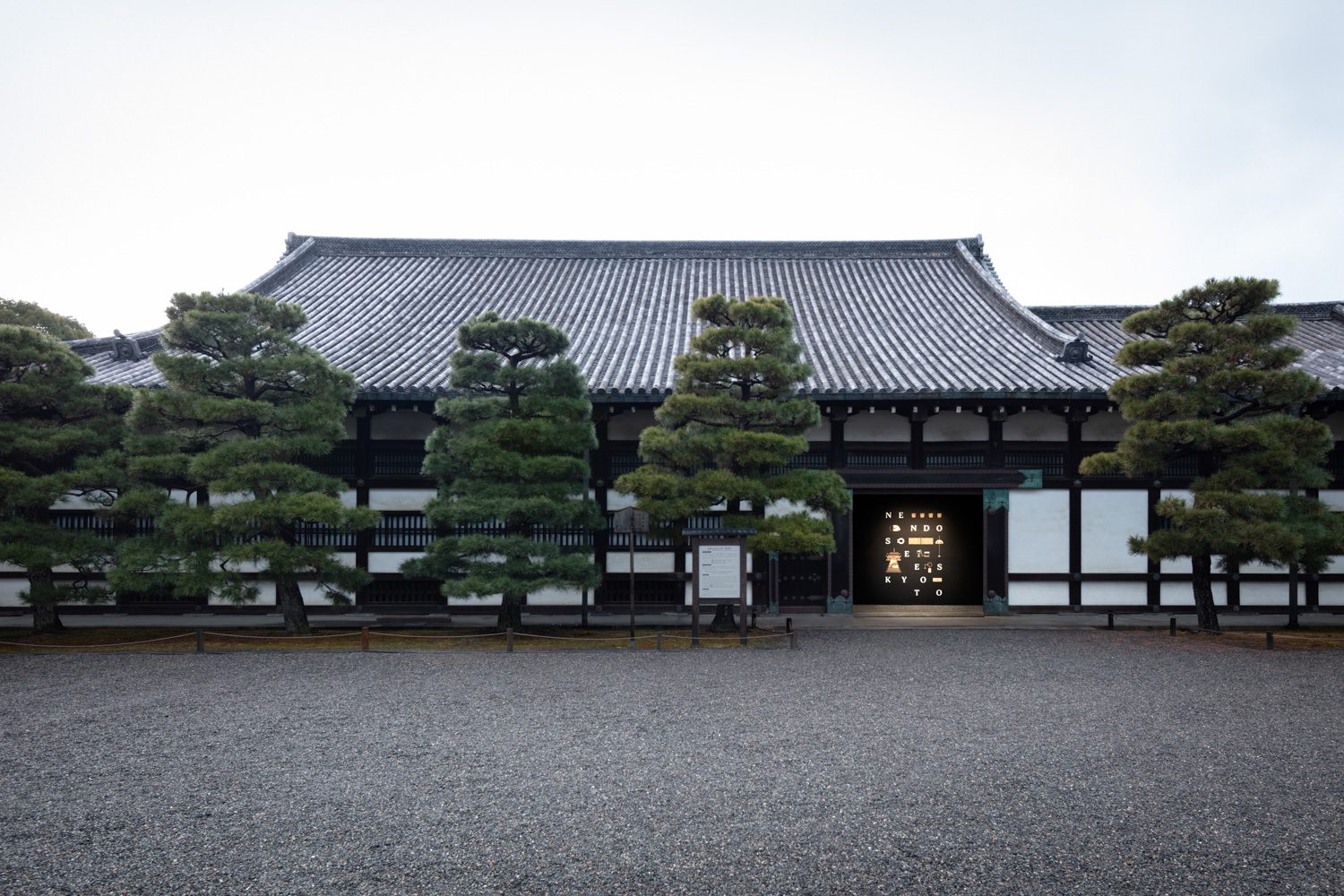
Nijo – jo Castle l Photo: Takumi Ota
Concept wise, the exhibition is curated for viewers to feel like they are opening a door into another world; a world which does not require us to travel too far to experience, but to rather contemplate objects in our surroundings on a more profound and comprehensive level. A small object should be thoroughly observed from every angle, a large-scale structure should be explored and experienced through and through, while new ideas should be combined to things that already exist within the designed set of specifications, which is what NENDO SEES KYOTO is all about.

Nijo – jo Castle l Photo: Takumi Ota
Ishidansu – In collaboration with Arata Nishikawa
: Old stones and newly carved wood.
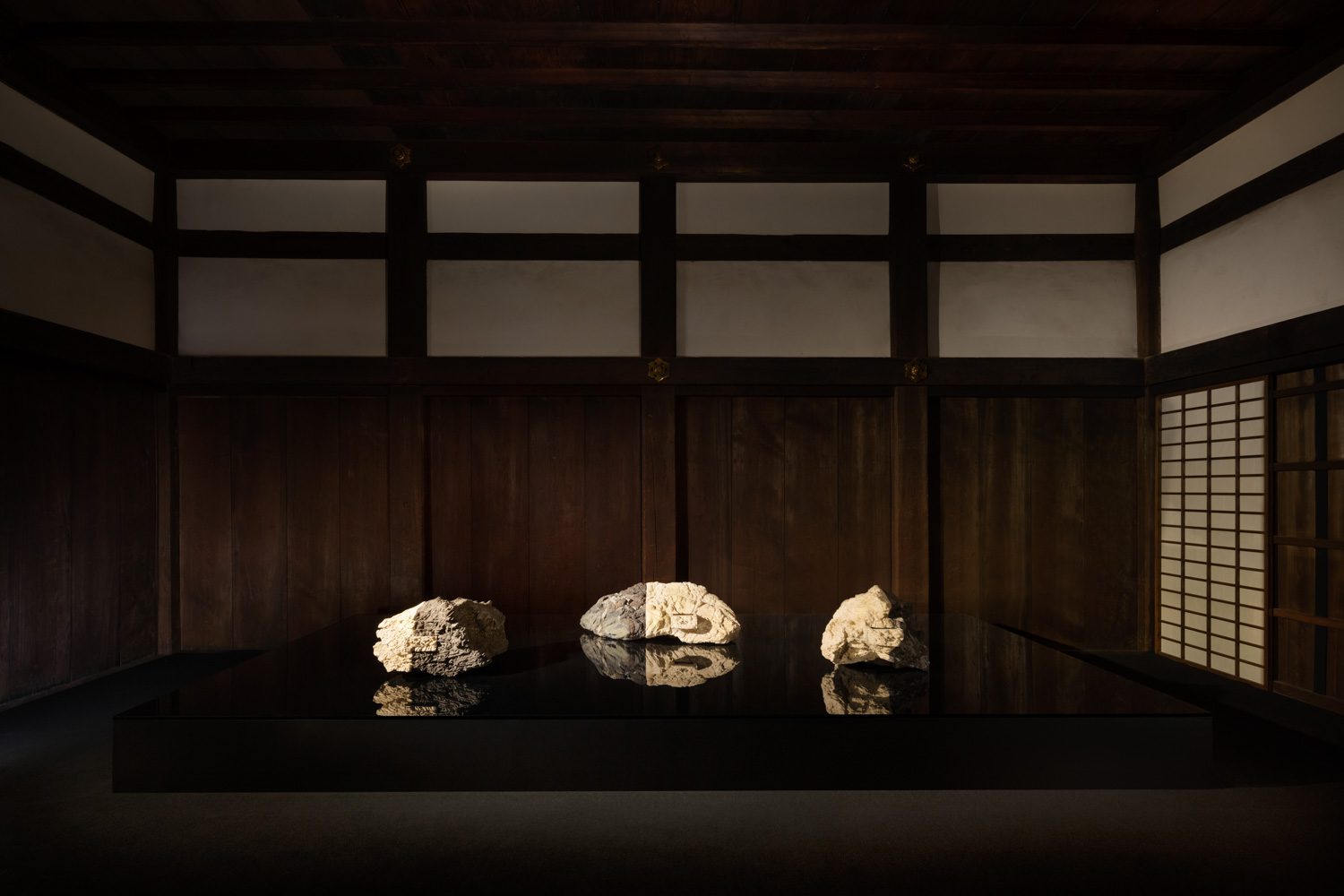
Ishidaru l Photo: Takumi Ota

Ishidaru l Photo: Takumi Ota
Nature and tranquility are integral parts of Japanese gardens. From the wish to incorporate natural elements of a ‘garden’ into a living space/unit, the landscape artist chooses each stone for its unique appearance that still exudes serenity. Monterey pine wood, which is a material commonly used for building construction, is magically carved to have a realistic stone-like surface and texture. The parts are put together into one unified object with a small drawer to emphasize its characteristic as a piece of furniture and a component in one’s experience of an interior space.
Teppun – In collaboration with Sherry Huang
: Old process, new technology

Teppun l Photo: Takumi Ota
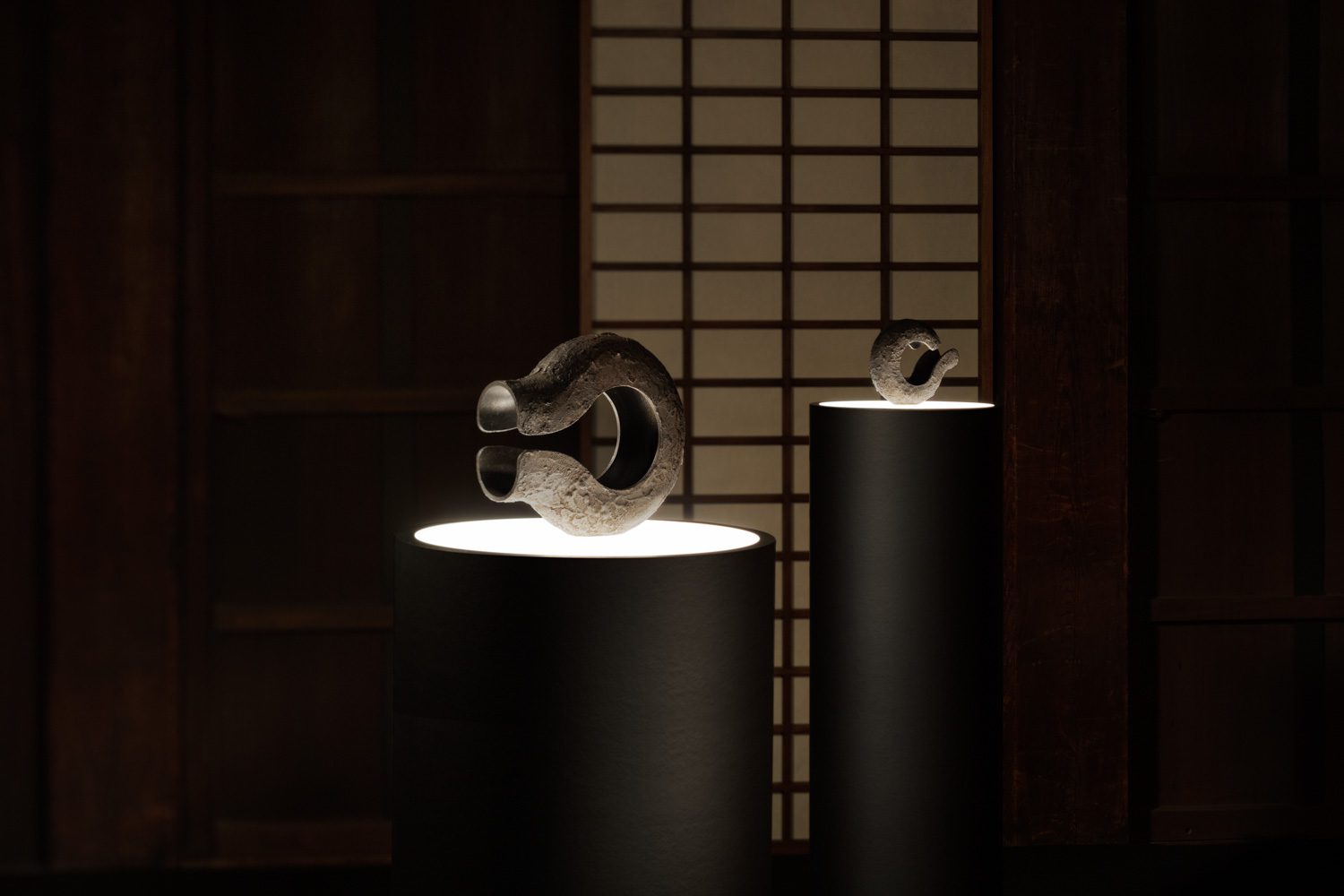
Teppun l Photo: Takumi Ota
A vase is created to complement flowers, embellishing the beauty of the stems to the colourful petals. Under the shadow of those delicate flowers is a strong titanium structure curved and twisted into a vase that supports the flora’s natural beauty. Created using a 3D printing technique, the design combines a repairing method of traditional tea pots used in traditional tea ceremonies to render the desired finish, allowing those who touch the piece to experience the tactility of metallic powder in the lacquered finish as well as the pattern created by the strokes of a brush made of rice panicles.
Yuikou – In collaboration with Yukiko Tomotsune
: Old joss sticks, new ideas
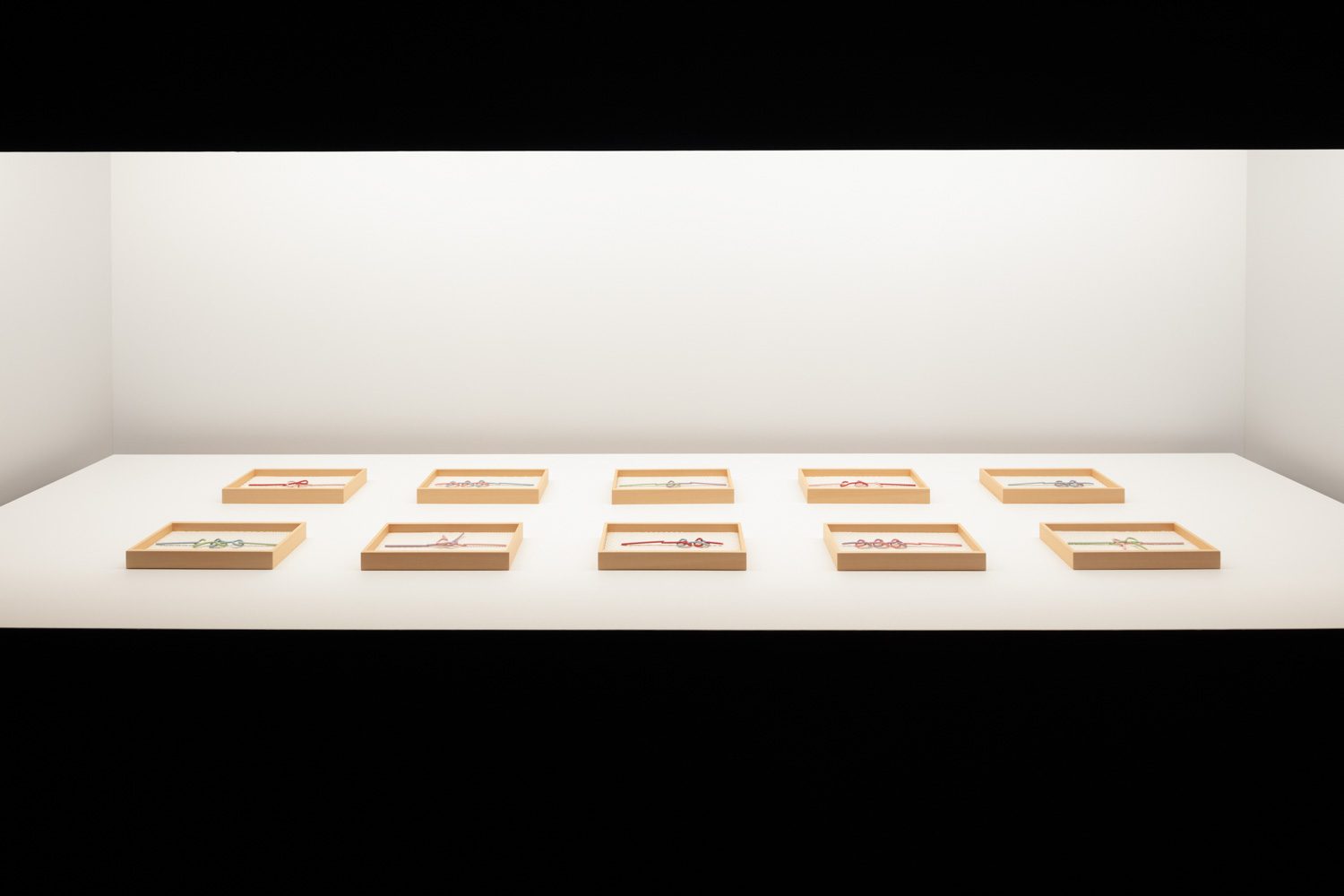
Yuikou l Photo: Takumi Ota
Beauty presents itself before our eyes as the aroma touches the nose and lingers on, this work demands viewers to exercise two of their physical senses. nendo comes up with a rope tying technique that connects joss sticks together. Once the burn reaches the connected part, the joss stick releases a new scented smoke after the first smell dies down, filling the air with the second fragrance. The duration for which each scent lingers is varied by the number of knots and how they are tied. Each type of aroma and joss stick are designed to have a lovely color and smell, perfectly complemented by the holder with a Japanese pattern, which serves as the perfect backdrop of the burned ash, creating a visually pleasing sight to the space in which the work is placed.
Fuu-Raijin – In collaboration with Yuumi Abe
: An old painting and a new expression
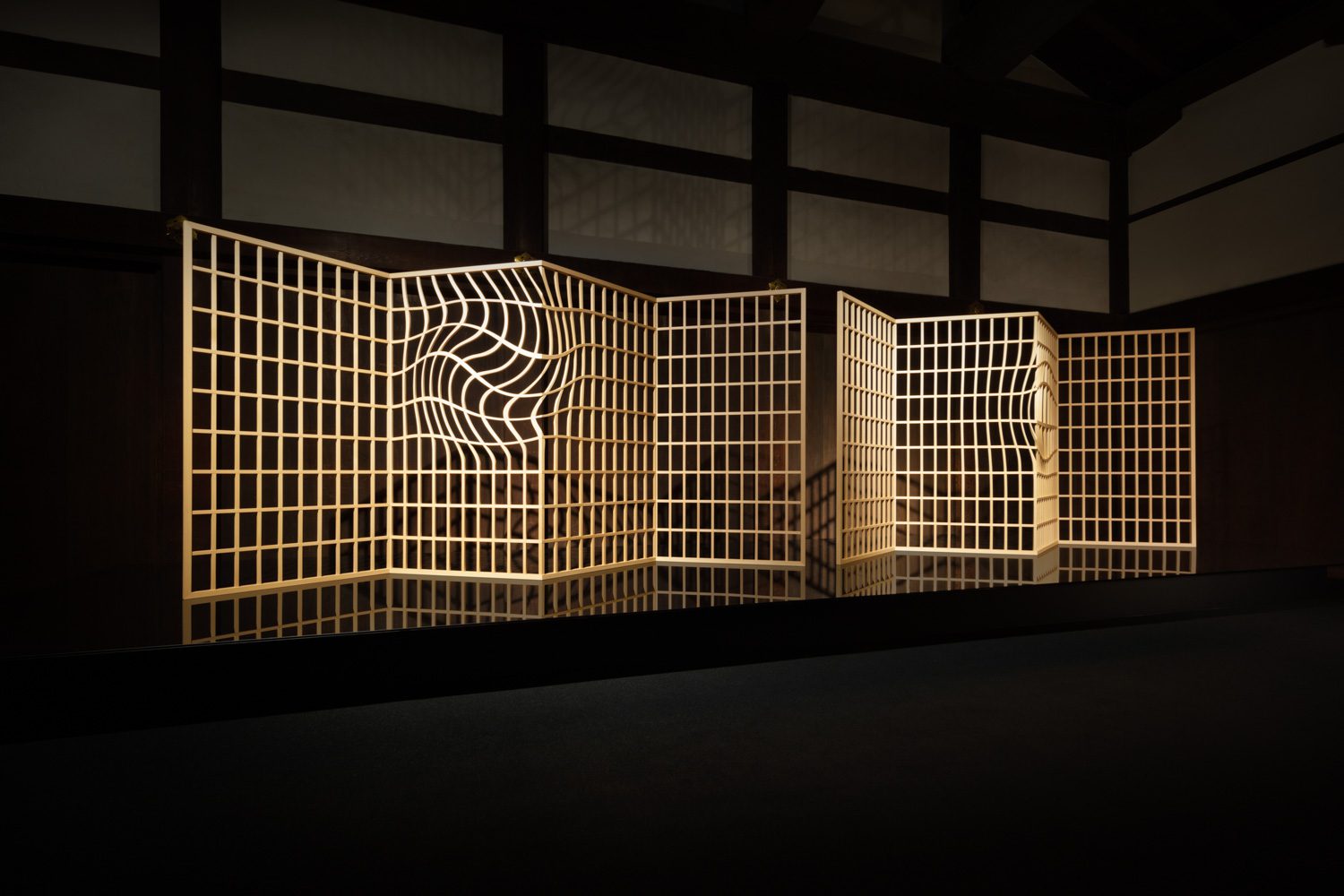
Fuu-Raijin l Photo: Takumi Ota
The exhibition reinterprets a classic Japanese painting ’Wind God and Thunder God’ on the folding screens made of Hinoki wood. The piece reveals its grid features without concealing anything. Parts of the wooden screens are deviated to create a three-dimensional illusion created by the two dimensional plane of the wooden piece. The screen on the left conveys the dynamic posture of the Thunder god drumming while the screen on the right simplifies the arched line of the bag carried by the Wind God. What’s even more magical is the two wooden screens are assembled using Tokyo’s ancient wood joinery technique called Kyo-Sashimono where the use of adhesives, screws and other tools needed to secure the joinery is completely absent.
Sunafuki – In collaboration with Yuto Suzuki
: Old utensils, new techniques
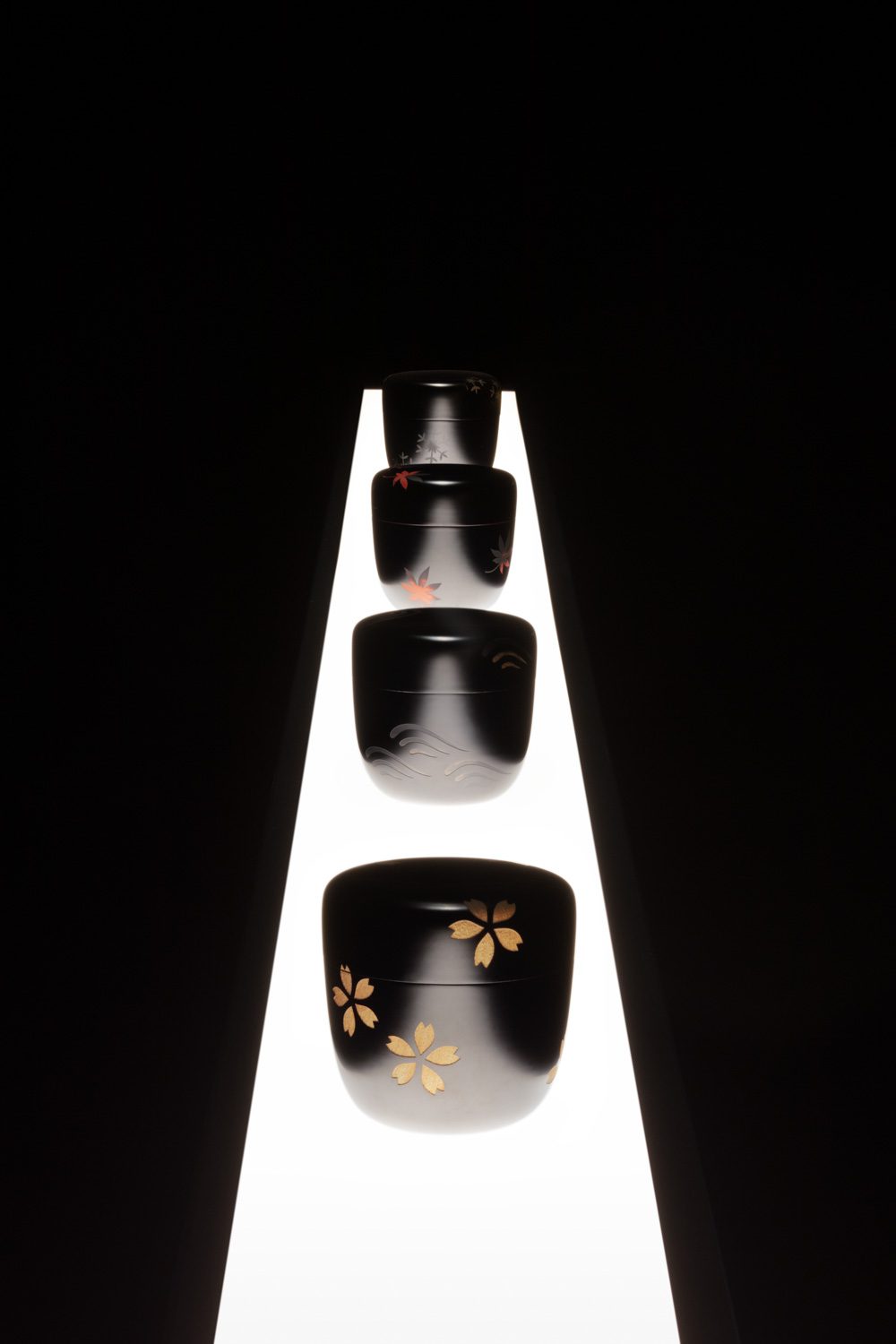
Sunafuki l Photo: Takumi Ota
A ‘tea caddy’ or a small container used to carry matcha powder is one of the basic equipment in traditional Japanese tea ceremonies. The collection consists of four tea caddies, which went through traditional polishing and lacquering techniques. While an ordinary tea caddy is adorned with a pattern created through a process of adding or filling, the pattern of this tea caddy collection is achieved through a method of ‘deterioration’ or Sunafuki (砂吹き), which directly translates to sand-polished surface. The seasonal patterns are created by sandblasting the utensils’ already lacquered surface, an extensive process that requires plenty of patience from the makers. The time in which each piece is made is varied by the complexity of the patterns, from Sakura (spring) where the wooden textural details are more discernible, ‘Wave’ (summer) with a distinct presence of the primary layer, ‘Maple’ (fall), which reveals a mixture of red and black colors on the exterior finish, to the lightly carved finish of ‘Snow Flakes’ (winter).
Hyouri – In collaboration with Arata Nishikawa, Yosuke Matsushita, Sherry Huang
: Old objects and new structure
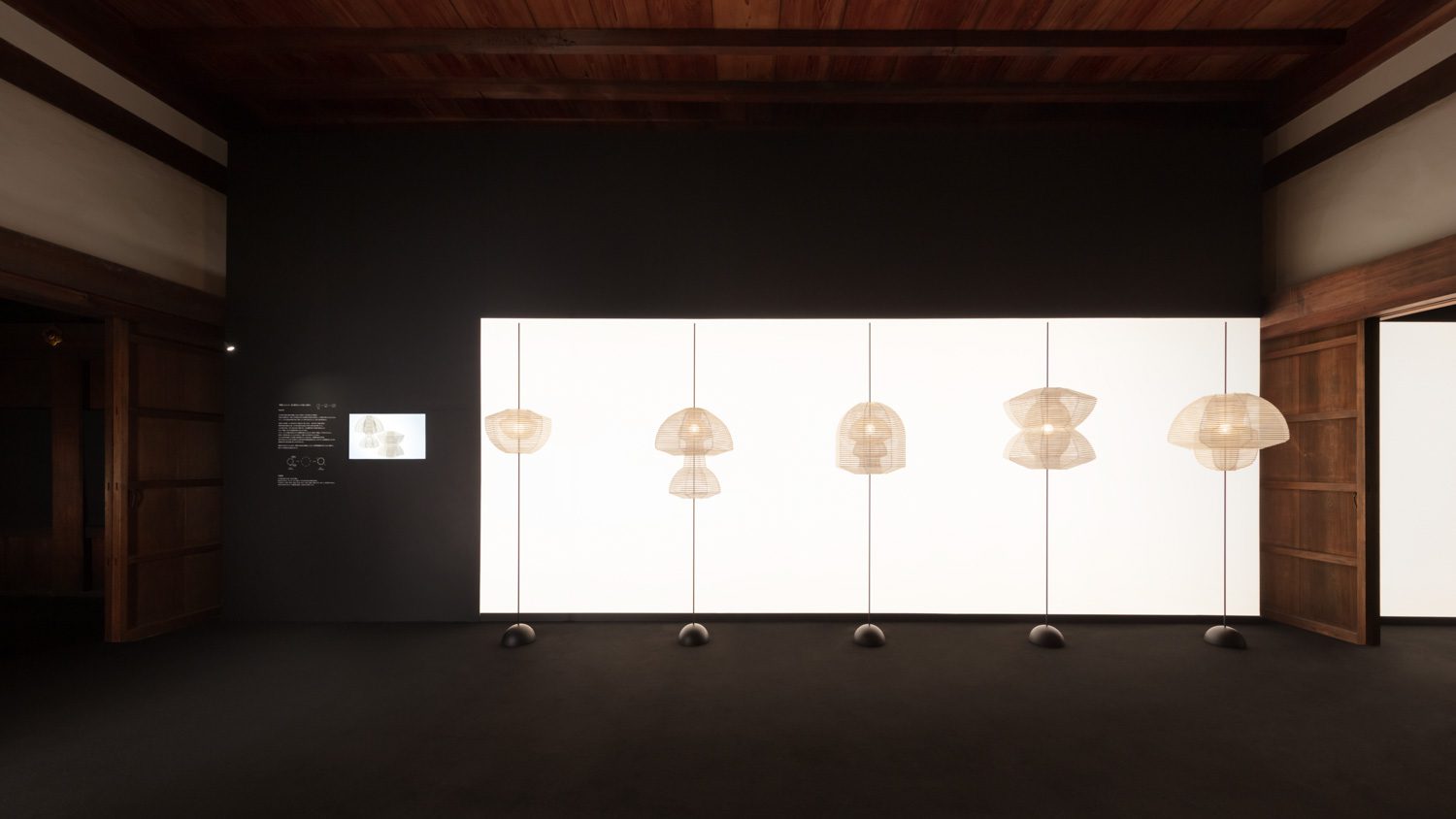
Hyouri l Photo: Takumi Ota

Hyouri l Photo: Takumi Ota
Despite its seemingly fragile appearance, Kyoto’s paper lamp is strong and highly durable for regular outdoor use. The interesting thing about the piece comes from its bamboo structure from which its strength is originated. nendo and the design team’s intention is to transform strength and durability into flexibility. The ring-like bamboo structure serves as the bone of the lamp with 8 additional joints added to each ring, allowing the lamp to be reversed, expanded and shrunk into various forms.
Junwan – In collaborationwith Takahiro Fukino, Arata Nishikawa, Yushiro Yamanaka
: Old tea cups and a new experiment

Junwan l Photo: Takumi Ota

Junwan l Photo: Takumi Ota
A glass that drinks water is the concept that the design team works with to bring new colors to the Rakuyaki (楽焼) teacup. Since the showcased collection in the NENDO SEES KYOTO exhibition already includes a teapot and tea caddies, teacups are naturally mandatory. Rakuyaki is a method in the making of ceramic-ware where the spin wheel is not needed, causing each piece to have asymmetrical features and unique cracks. When combined with the aforementioned concept where each cup absorbs and drinks its own drink, the work becomes even more intriguing for the boundless possibilities it can bring.
Koumyo – In collaboration with Sayaka Ito, Suheyl Onal, Takahiro Fukino, Mizuki Kasai
: Old faith, new technologies
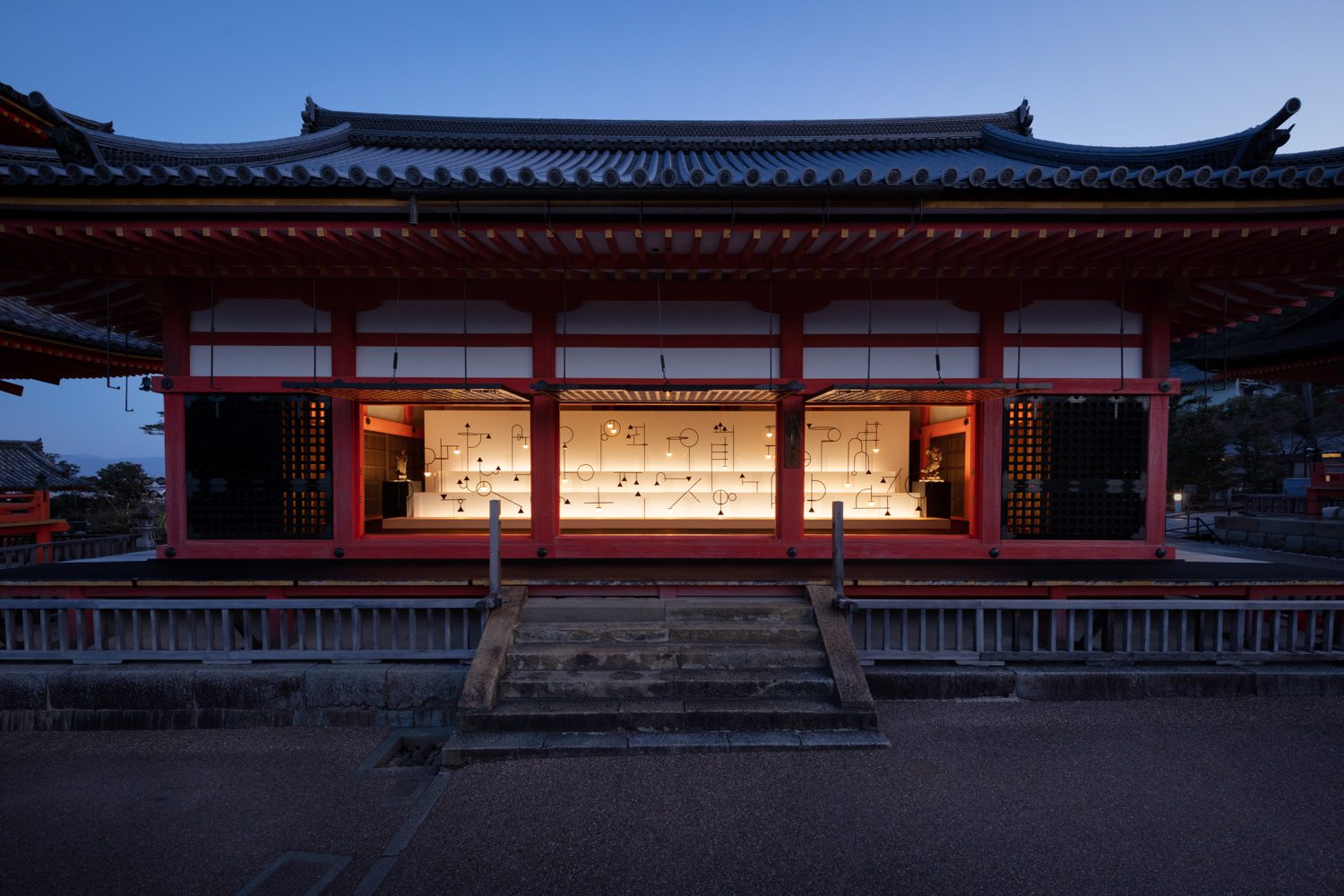
Koumyo Kiyomizu-dera Temple l Photo: Takumi Ota
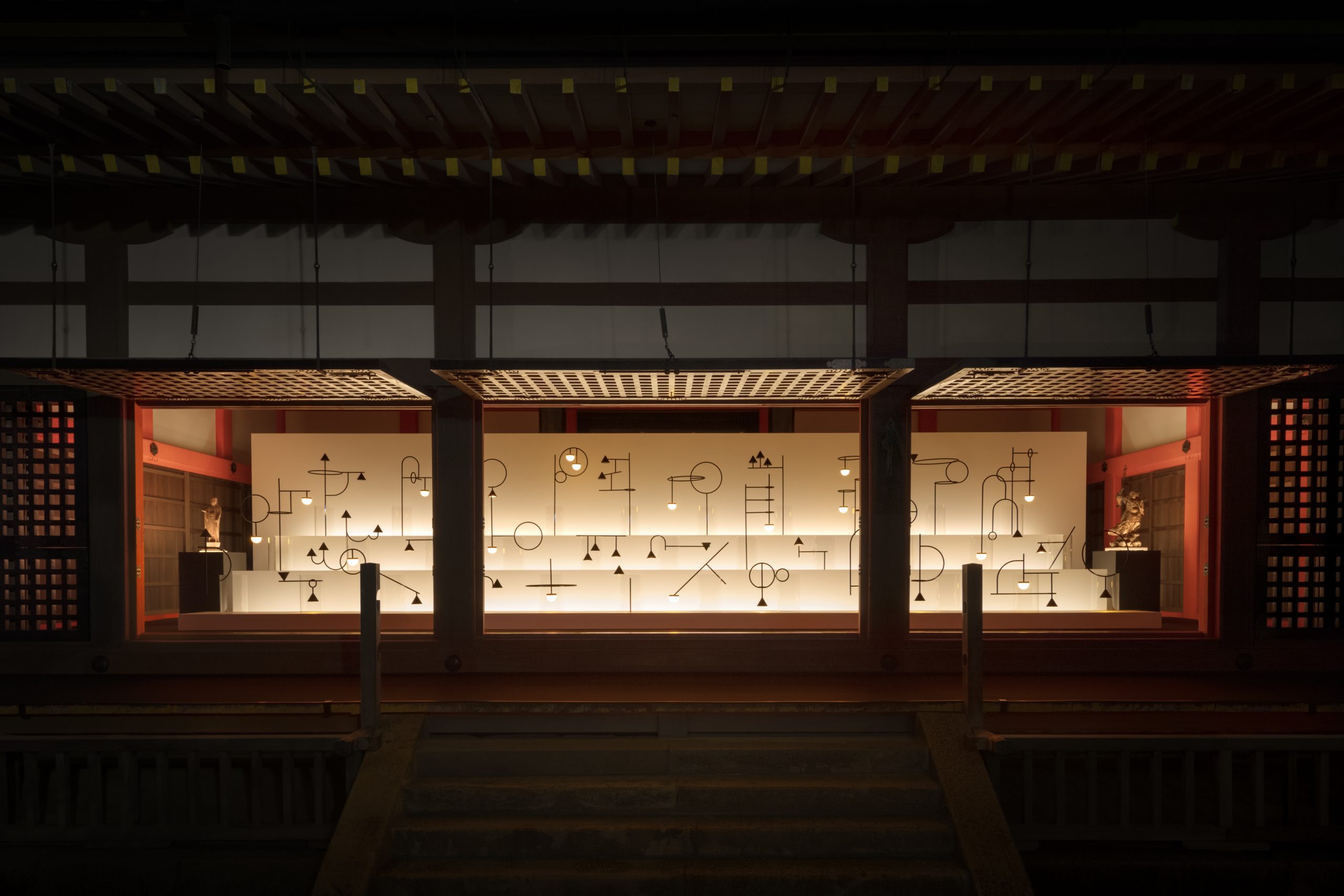
Koumyo Kiyomizu-dera Temple l Photo: Takumi Ota
The collection contains the highest number of works in the NENDO SEES KYOTO exhibition. The lighting installation takes place inside Kiyomizu Temple and tells the story of the revelation of Avalokiteśvara, a bodhisattva who embodies the compassion of all 33 Buddhas with 11 faces and 1,000 hands, following what was written in the Saddharma Puṇḍarīka Sūtra scripture. The 33 lamps are created using modern technology, which enables their wireless and rechargeable features, conveying the abstract presence of energy within the praying area.
Nissoudan – In collaboration with Mizuki Kasai, Daisuke Maeda
: An Old corner, A New Perspective
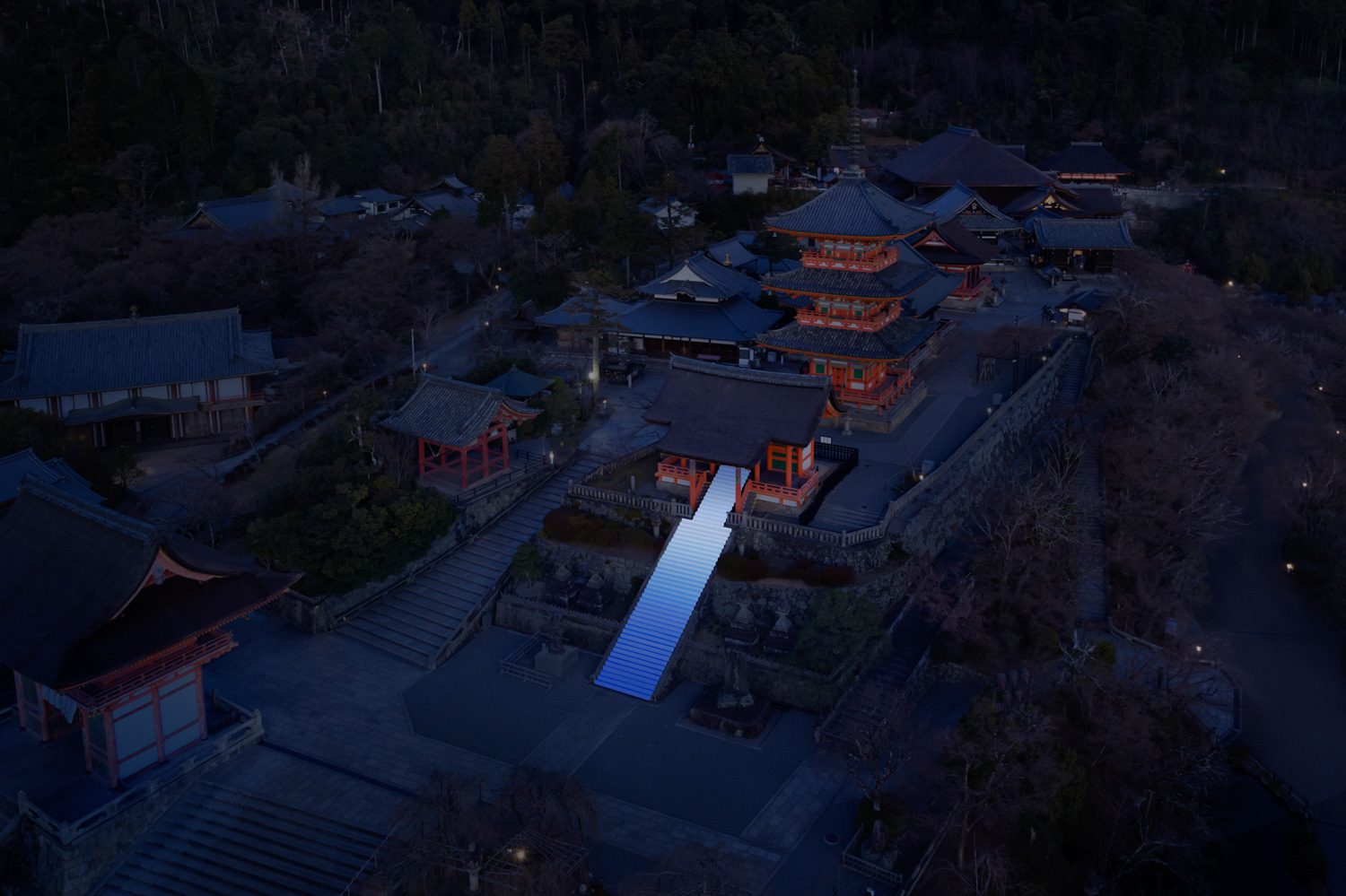
Nissoudan l Photo: Takumi Ota

Nissoudan l Photo: Takumi Ota
Originally, the western gate of Kiyomizu Temple is known as the area where the ‘Nissoukan’ meditation was once carried out. The view of the setting sun is breathtaking when looking out from the inside of the temple, reminding one of a vision of a pure heavenly place. Here, one confronts their inner self while looking out to the sky with an undisturbed, resolute mind. When people no longer showed interest in walking up to this particular part of the temple, the initial purpose of the space had gradually disappeared. The exhibition installing a mirror to reflect the sky is an attempt to revive the tradition. What’s special is how the 38 mirror steps are installed after a careful on-site calculation, causing all the steps to be in the angle where viewers are able to stand at the foot of the stairway and see the western sky without having to look upward.
While the works featured in NENDO SEES KYOTO are not exhibited in the same space, they all share the same, clear conceptual direction, which is the intention to revive and conserve local crafts and cultures through nendo’s observational and fun approach. Everything is impeccably conveyed and materialised with the hands of masterful artisans.
Designers are now celebrating the old. Traditions, techniques and methods of the past are being brought back to life and regarded as the origin of the present. By looking back to the roots and old, long-standing objects and creations with the perspective of modern-day dwellers, boundaries are being pushed, leading us into unexpected territories. With NENDO SEES KYOTO being conceived specifically for Kyoto, it’s interesting and exciting to think about how an exhibition of this nature would look like, and what story it would tell if it were to happen here, in Thailand.

